Introduction
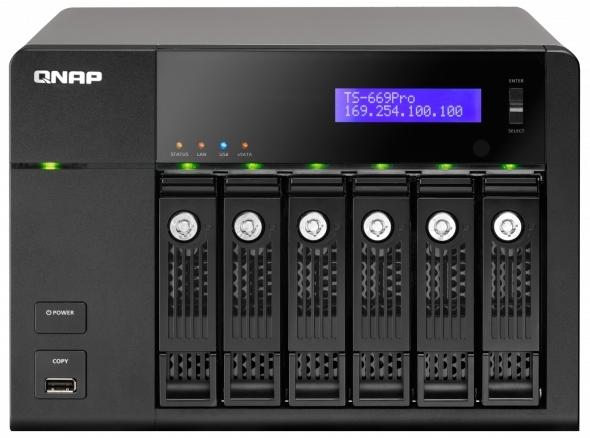
QNAP's new QTS 4.0 software is out, now in version 4.0.2 and it's quite the upgrade. I'll be honest though, the first time I worked with the QTS 4.0 it was still in beta and I wasn't an instant fan.
The software was fine, but the extra applications weren't ready yet and it scared me a bit. QNAP has a large add-on software library and most of the existing packages weren't ready during the beta. Now, the packages that were available on 3.8 are converted over and then some.
The new QTS 4.0 software update is more than just a software update. The new package also improves performance. The QNAP TS-669 Pro we're reviewing today uses the same processor and RAM as the TS-669L we reviewed a few months back. Both are 6-bay units, so we can see the performance improvements in transfer speeds in this review.
This review is about more than just the new software and the performance that comes with it. Today we're looking at the QNAP TS-669 Pro, a 6-bay NAS that sits in the middle of QNAP's SMB product lineup.
Let's take a look at the hardware features and then look at the new software.
Hardware Specifications and Pricing
Modern NAS servers have moved beyond data storage through a wire network. In order to get the most out of a NAS you need to look at the extra I/O hardware and the mountain of potential software features.
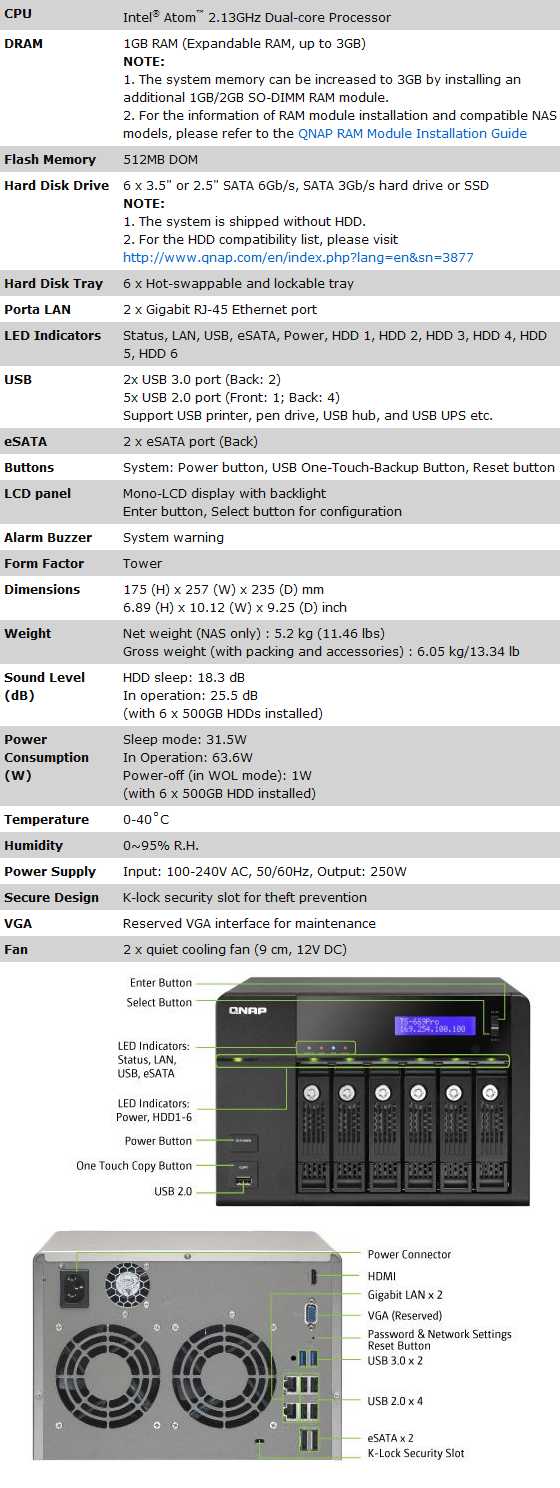
The TS-669 Pro uses an Intel Atom dual-core processor running at 2.13GHz. The NAS ships from the factory with 1GB of DDR, but QNAP sells two add on RAM packages, one with a 1GB SO-DIMM and the other with a 2GB SO-DIMM. The TS-669 Pro can use up to 3GB total divided by two SO-DIMM slots.
The TS-669 Pro is a 6-bay system that can use either 3.5" or 2.5" form factor drives. Getting data to those drives comes from either two gigabit Ethernet ports, the USB copy function on the front of the NAS or the six other USB ports (2x USB 3.0). The TS-669 Pro also has two eSATA ports on the back for additional expansion.
Being the Pro model, this unit also has a front LCD display that allows you to setup the NAS or check the system settings. Speaking of displays, the HDMI port on the back of the NAS allow you to setup the ultimate media center.
Using Google Shopping we found the QNAP TS-669 Pro for as low as $969.99. This is right around $100 more than the display-less TS-669L that we reviewed previously.
Software Features
NAS products are equal parts hardware performance and software features. One compliments the other in a balanced product. You need more hardware performance to run more software features at the same time.

The software list is ridiculous. Looking over the list you can see QNAP through of everything and then some. This is just the base software list though and doesn't include all of the third party add-on packages.

As you can see, QNAP managed to move all of the add-on packages over to the new QTS 4.0 software and then added a few more.
Packaging
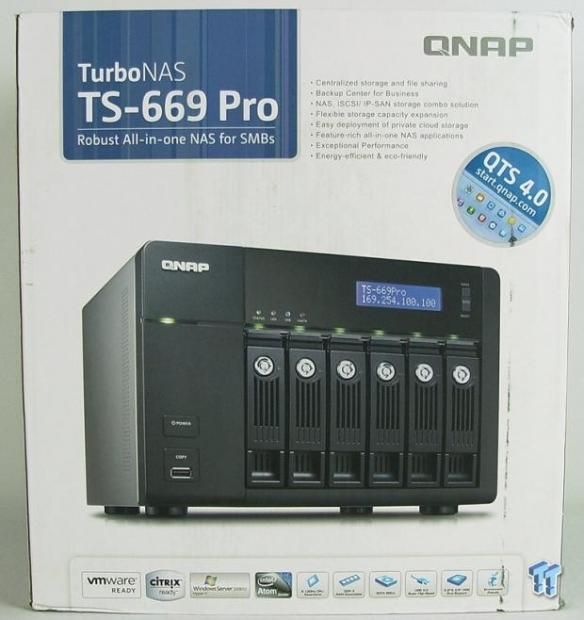
QNAP put together an attractive and informative retail package for the TS-669 Pro.
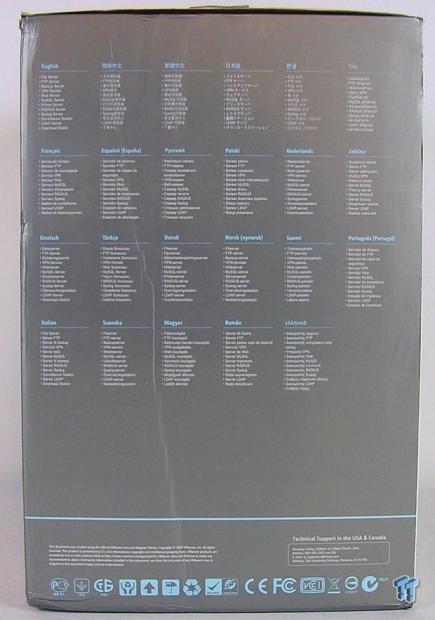
Each side of the package adds more information, but there isn't a package large enough to fit all of the information that we listed on the previous page.
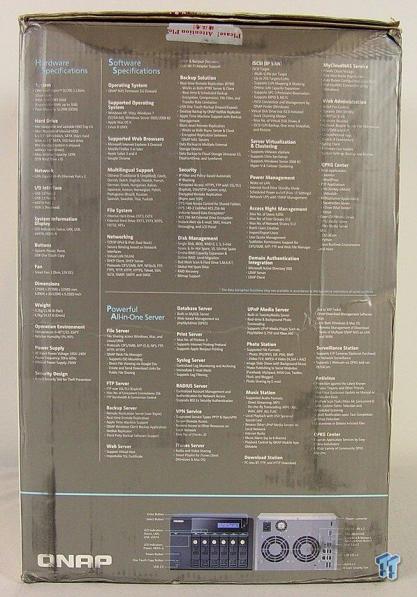
QNAP gives it a good effort through.

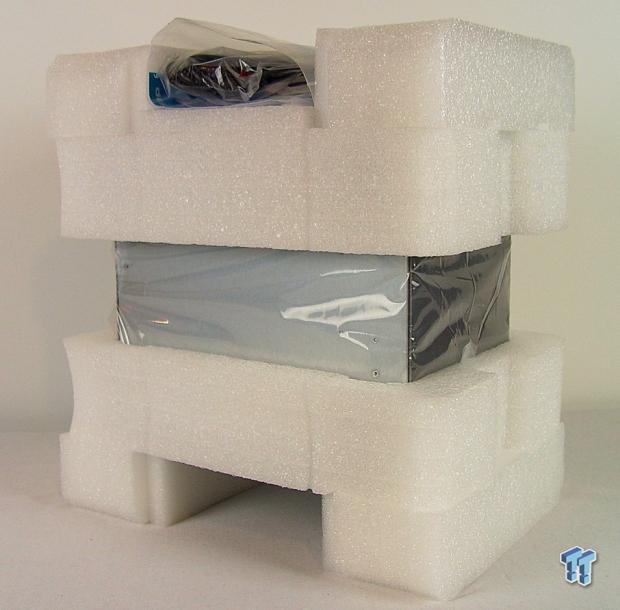
Inside we found the NAS packed well with dense foam keeping the NAS safe for shipping.
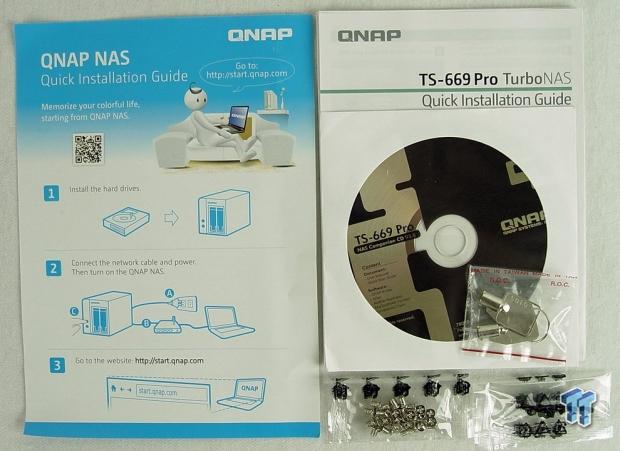
The accessory package includes a software and manual disk, a paper manual, keys for the drive sleds and screws for mounting drives to the drive sleds.
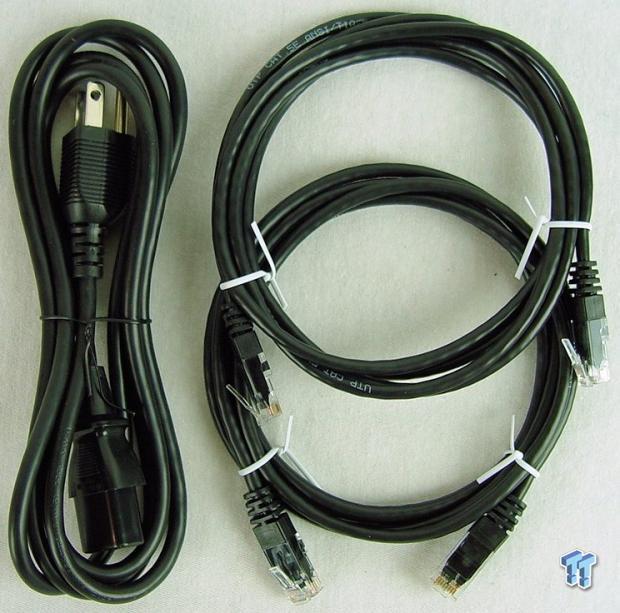
A power cable and two Ethernet cables are also included.
QNAP TS-669 Pro
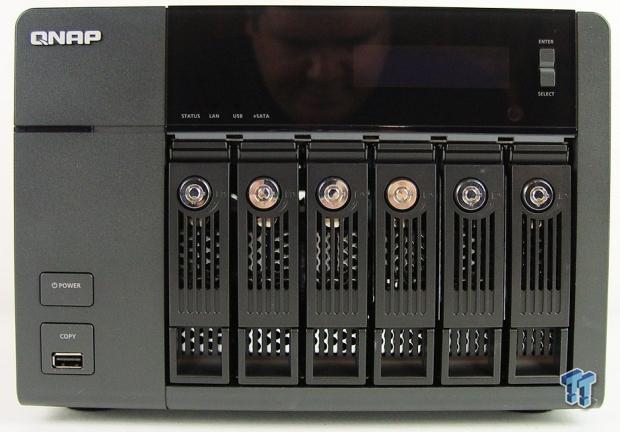
The QNAP TS-669 Pro is a lot like the TS-669L we previously tested. The Pro model adds an LCD display and locking drive sleds.
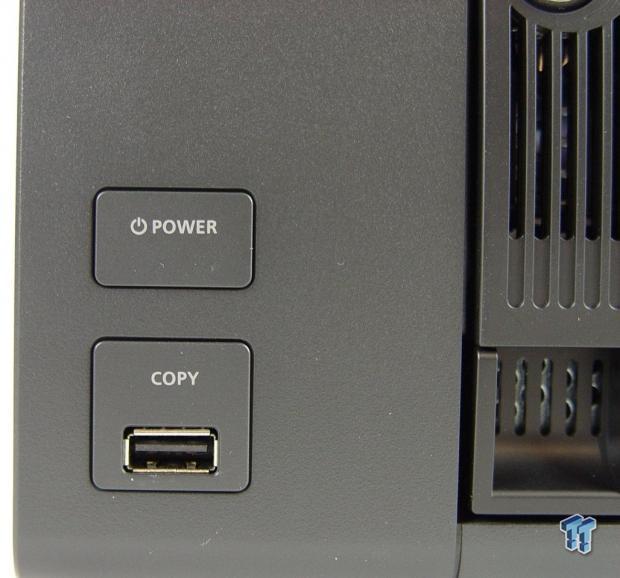
The lower left side is where the power button and USB 2.0 Copy Port is located. The copy function is very useful for backing up data from thumb drives and other USB devices.
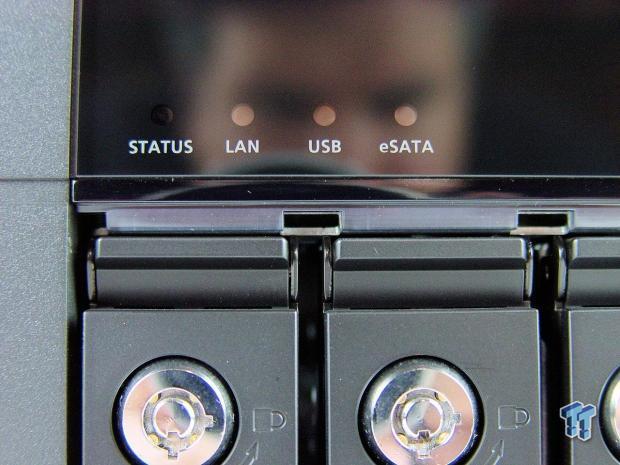
Four status LEDs on the front show data activity in the NAS.
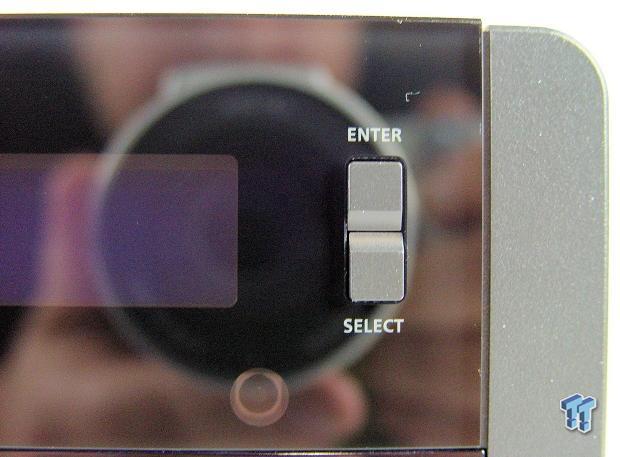
Two buttons next to the display screen are used to setup the NAS and check the status of the system. In this close up image above, you can also see the IR sensor for an optional QNAP remote control for media center use.
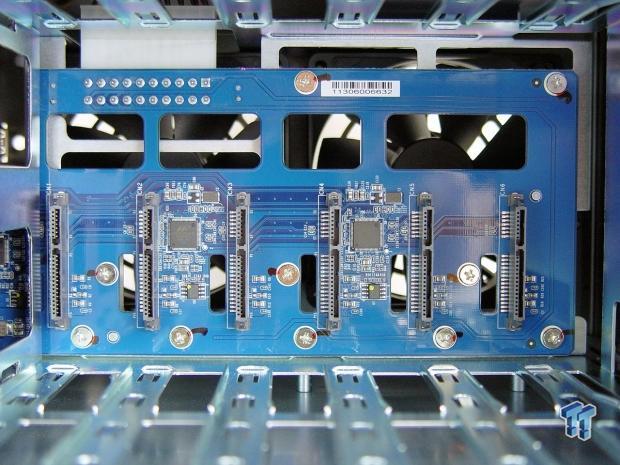
The TS-669 Pro works with SATA HDDs.
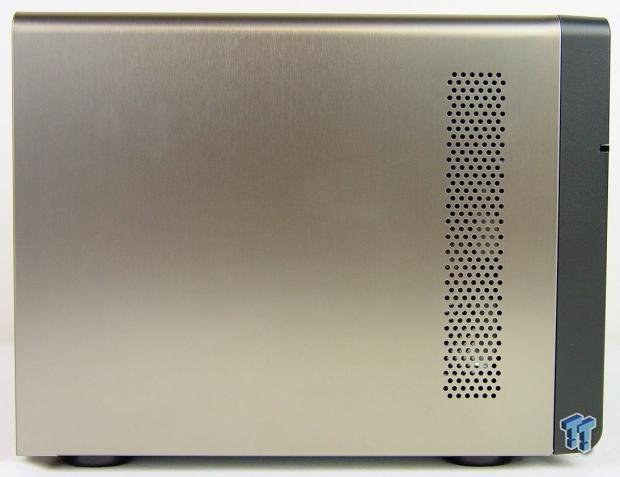
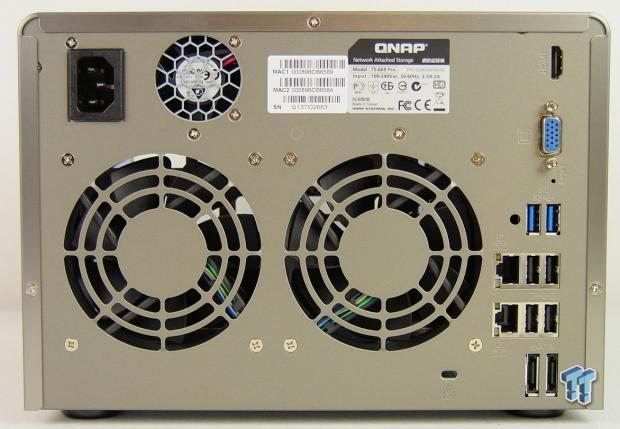
Most of the I/O connectors are located on the back of the NAS. Two large fans keep the HDDs cool and a small fan keeps the internal power supply cool.
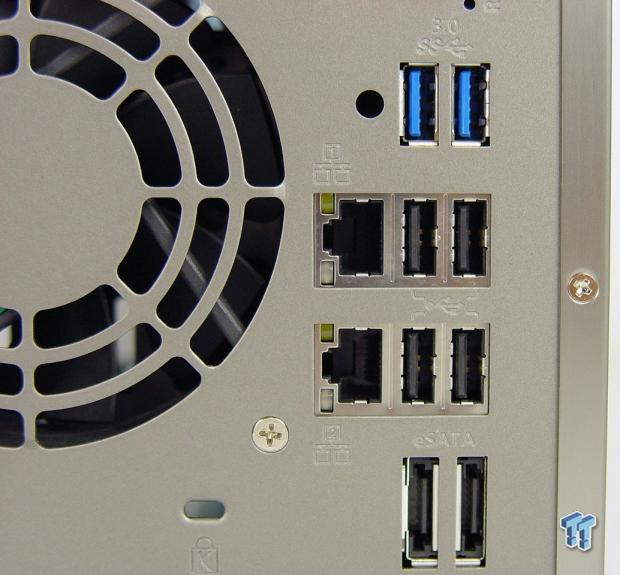
There are two gigabit Ethernet ports, six USB ports (2 USB 3.0) and two eSATA ports.
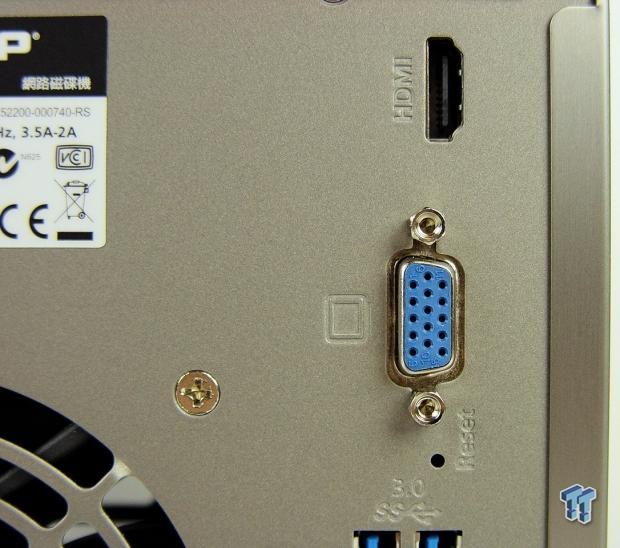
There are two display options, a VGA and a HDMI port. The HDMI port was added to increase the functionality of QNAP NAS products. An optional remote control rounds out the media center experience.
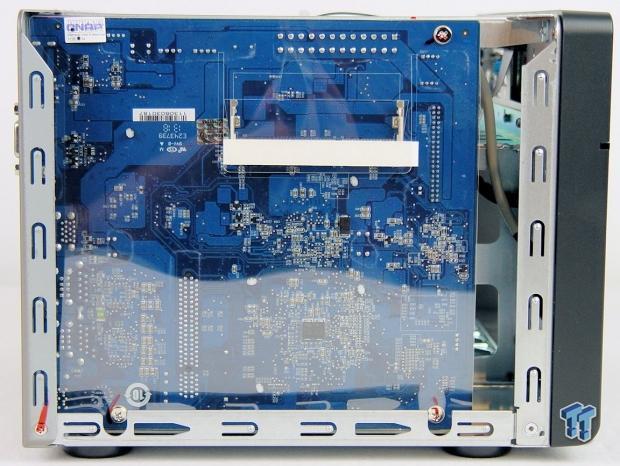
Adding DRAM to the NAS is as easy as removing three screws and removing the cover. The open SO-DIMM slot is on the outside of the motherboard. QNAP offers two expansion options, a 1GB kit and a 2GB kit.
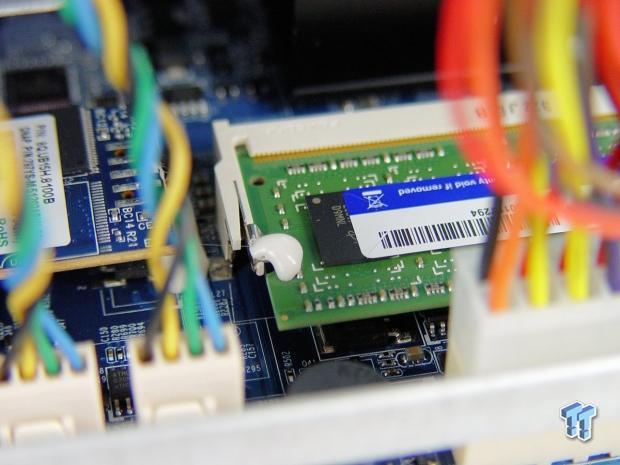
The TS-669 Pro ships with 1GB of DRAM installed from the factory. QNAP glues several of the components and connectors in place so they can't dislodge during shipping.
Configuration Menus
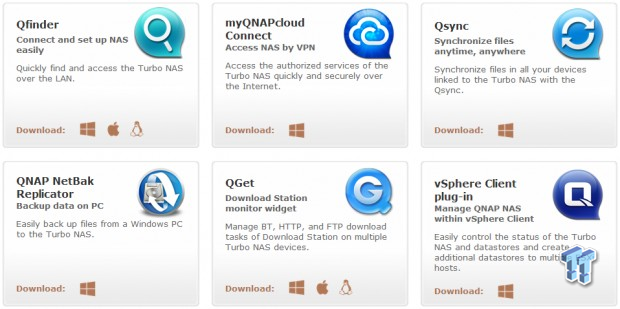
Qfinder allows you to find the NAS on the network without setting the IP address.
QNAP has other useful software on its website as well.
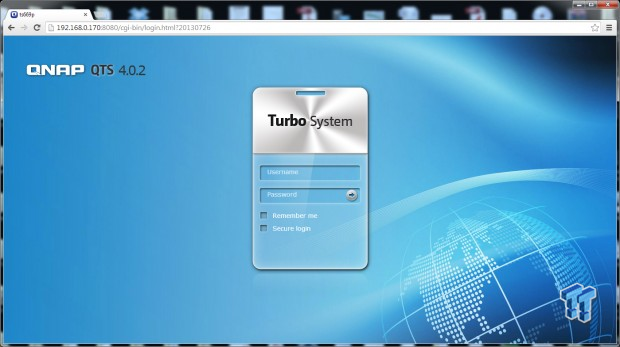
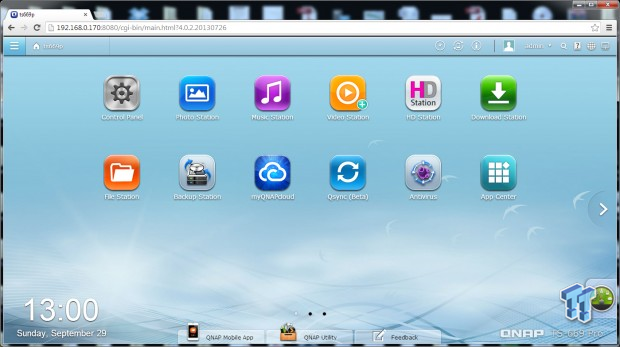

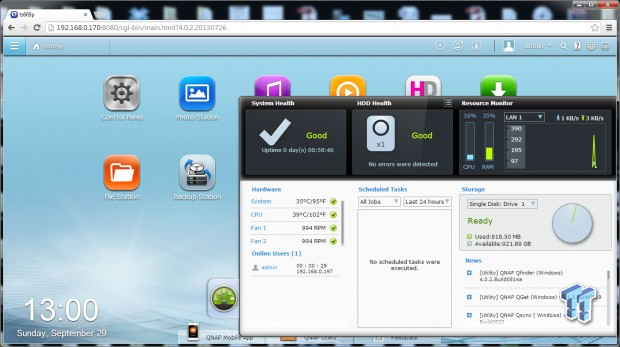
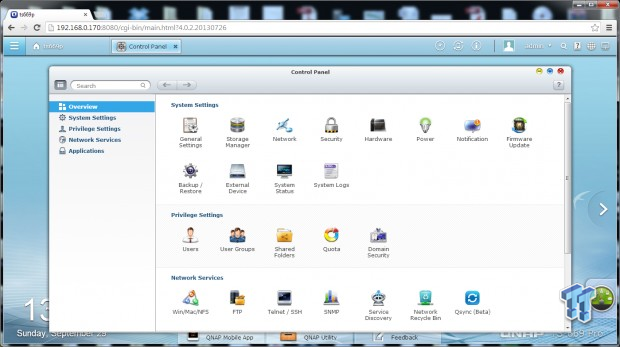
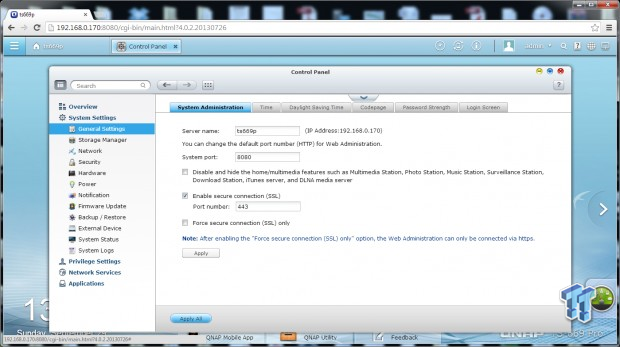
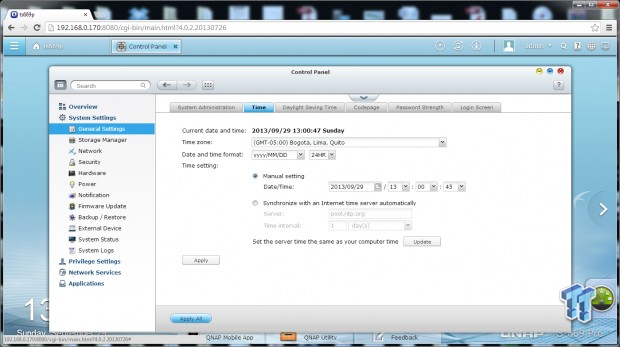
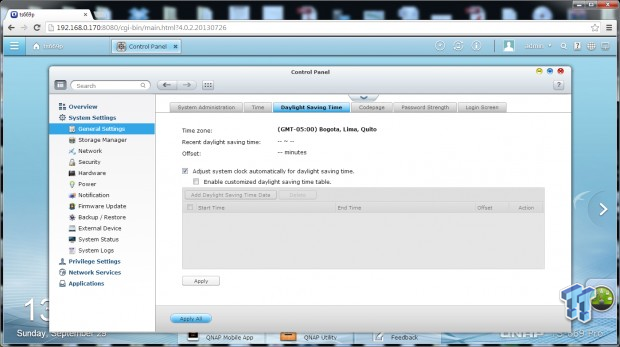
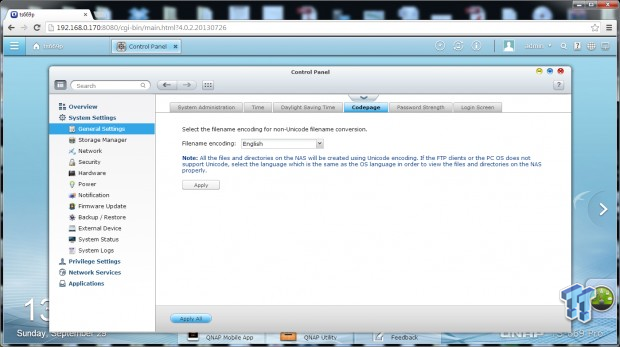
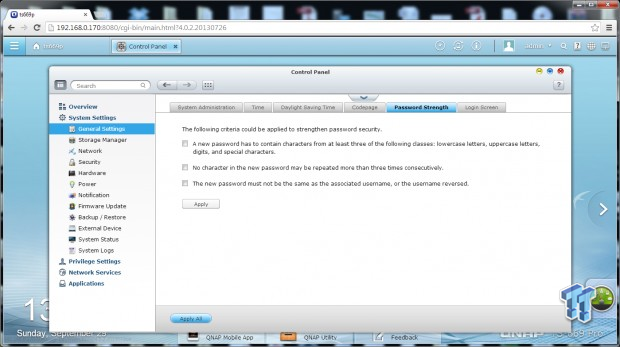
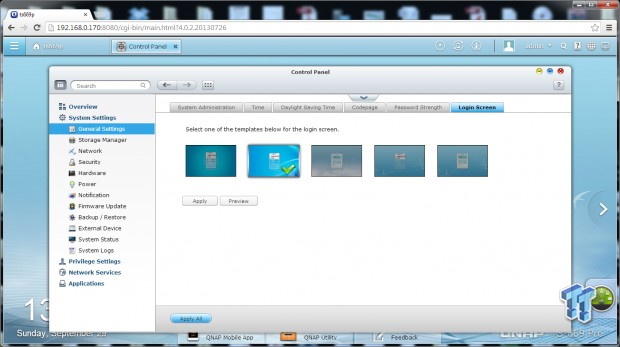
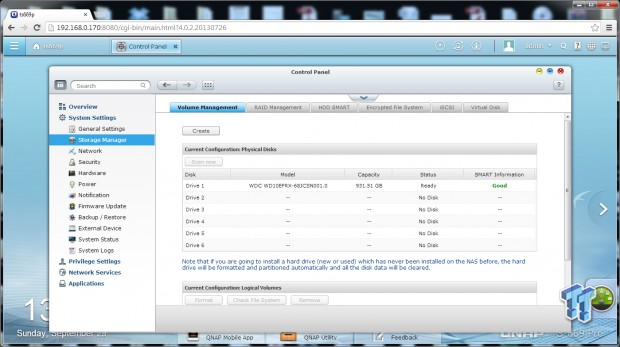
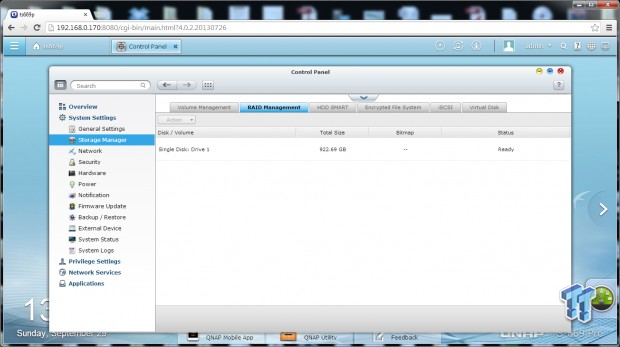
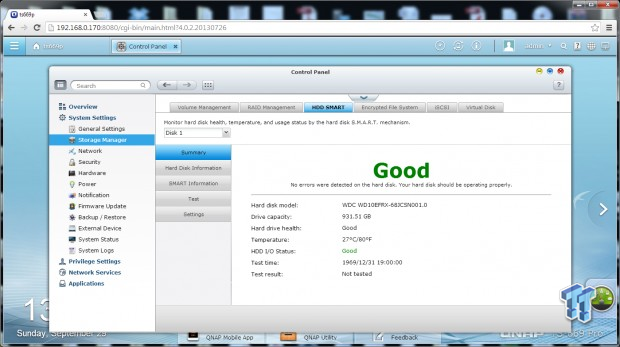
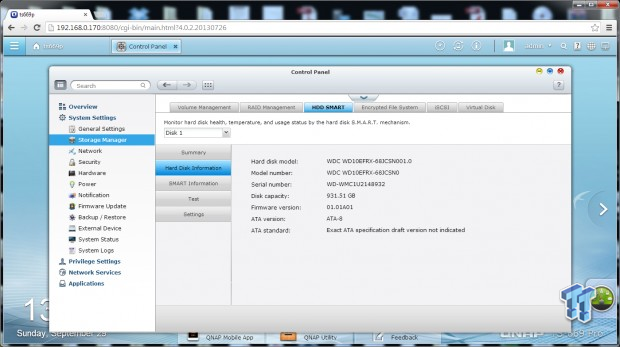
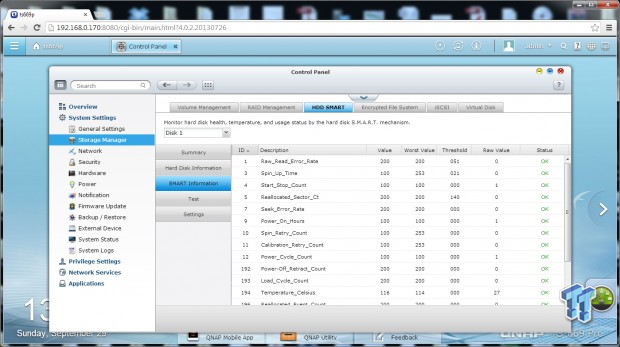
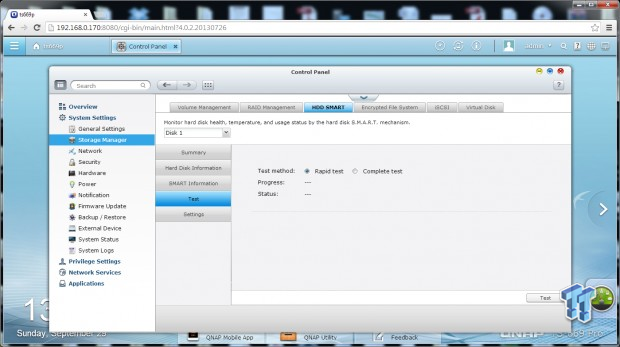
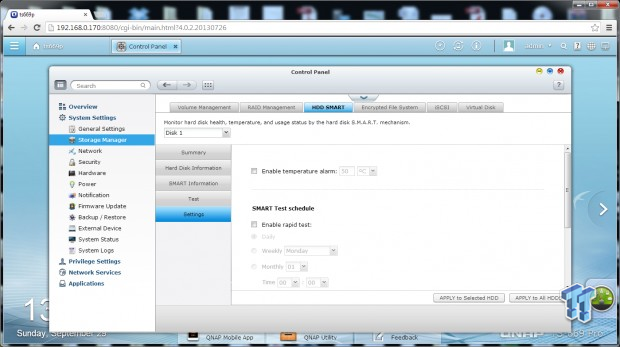
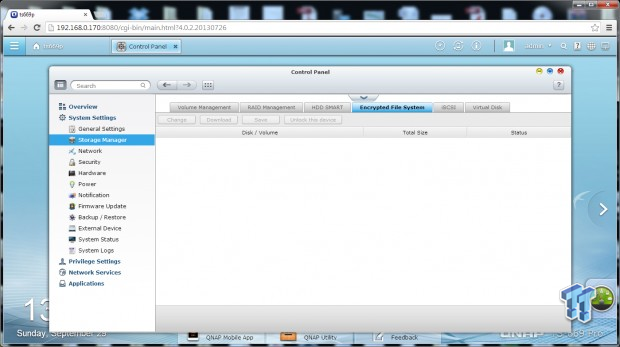
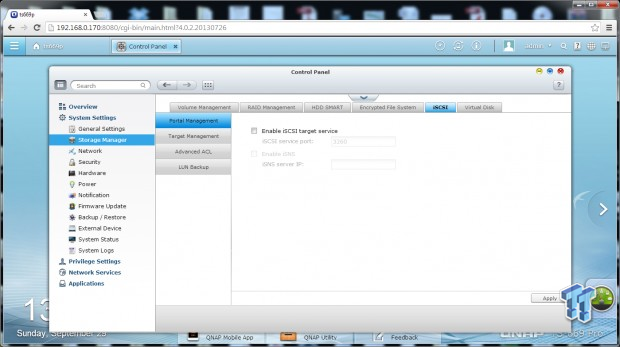
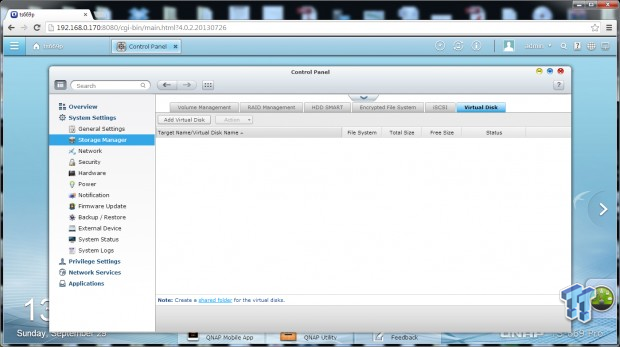
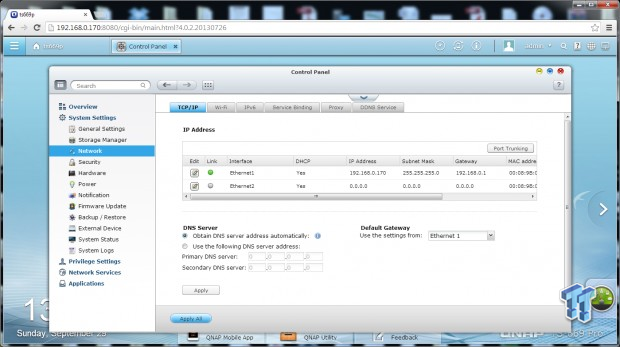
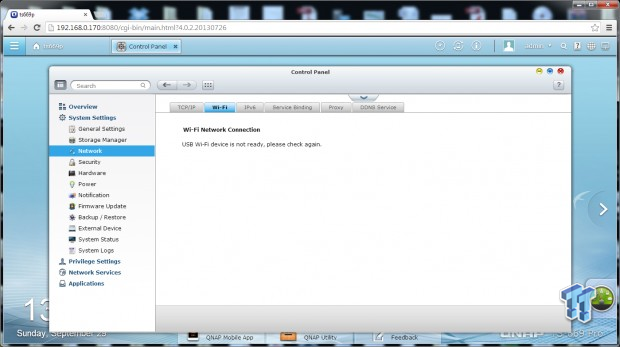
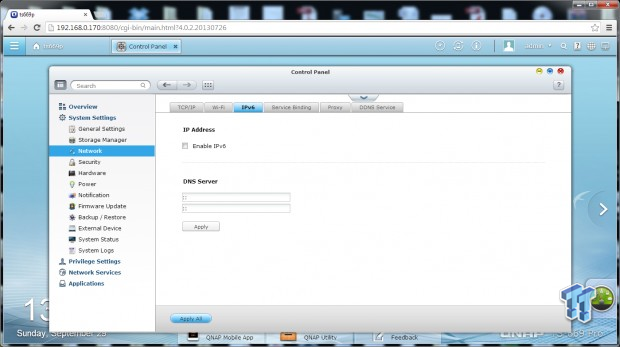
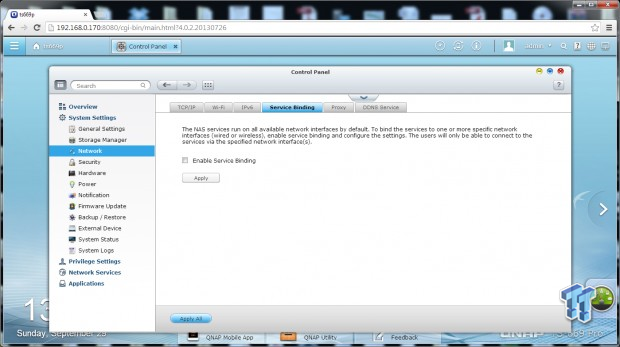
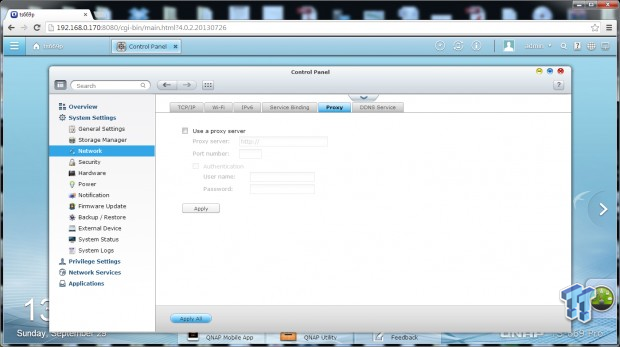
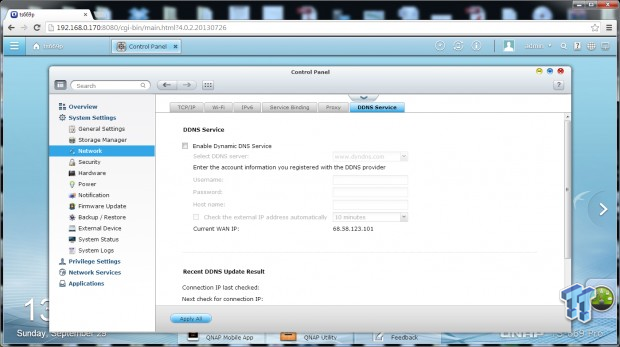
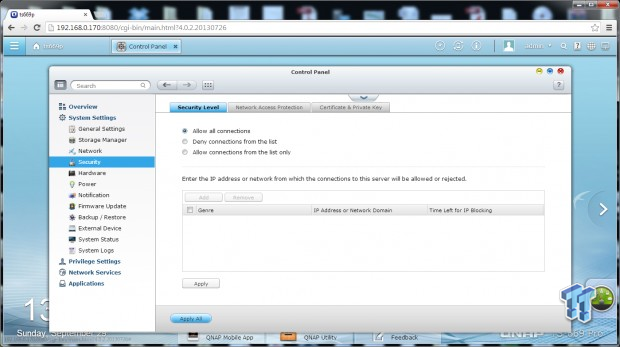
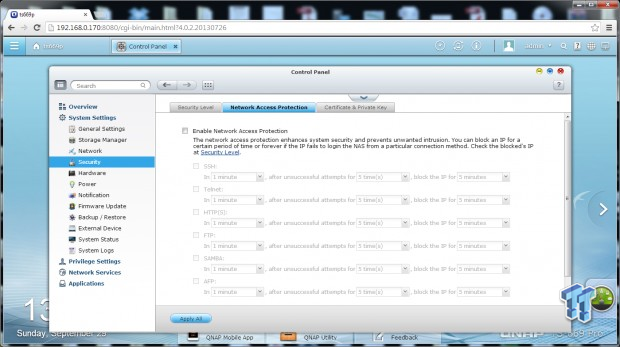
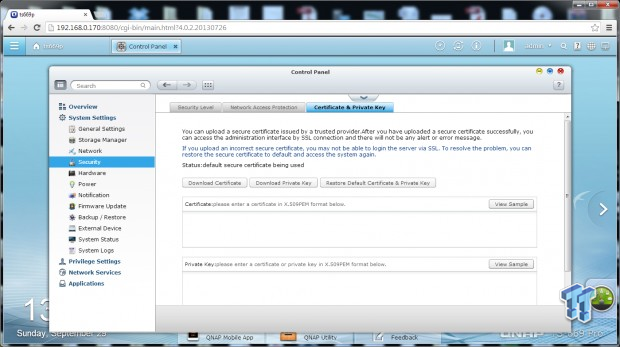
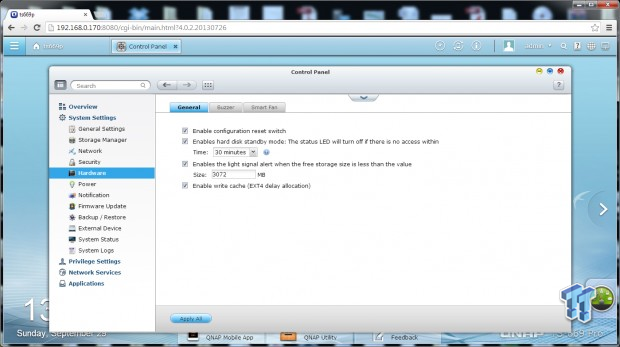
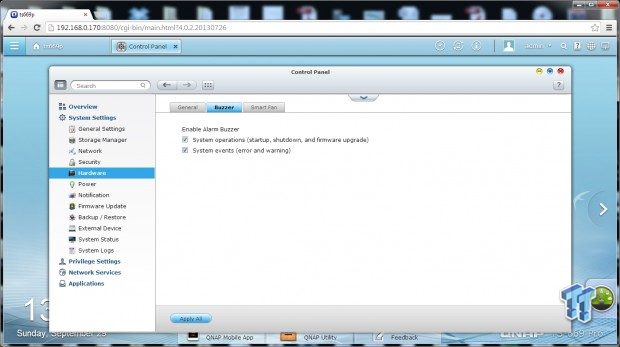
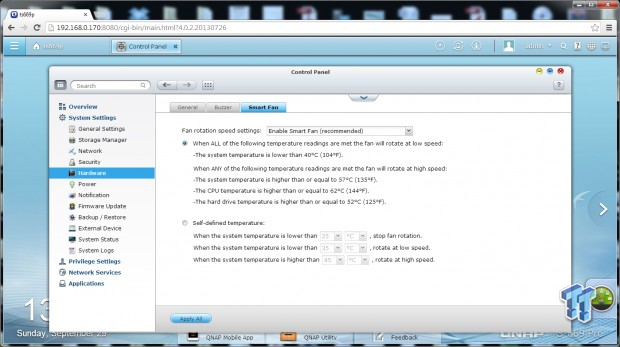
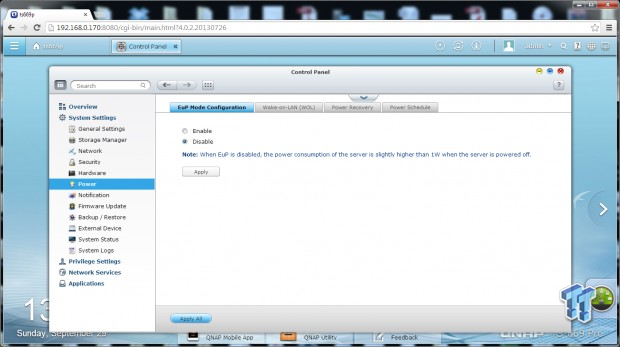
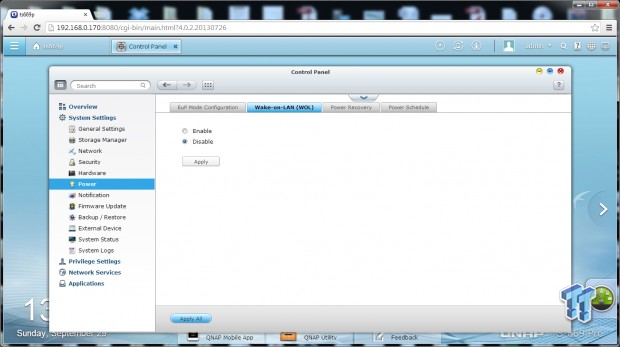
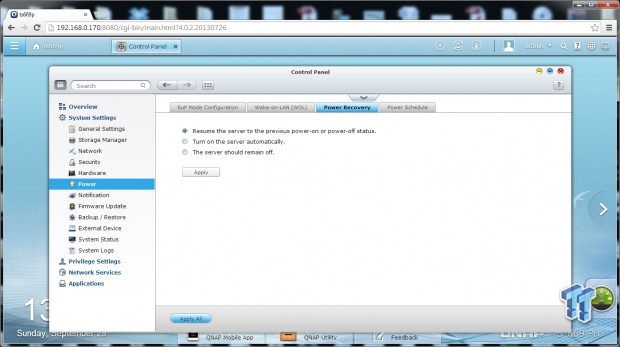
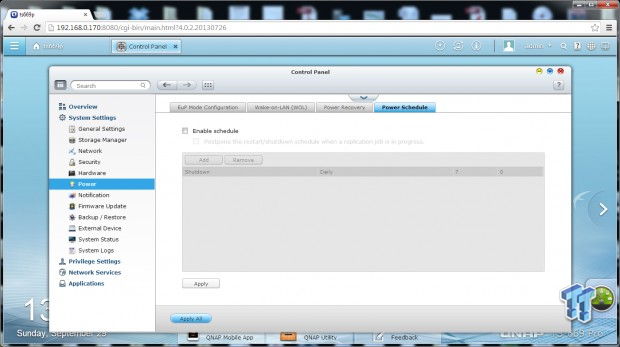
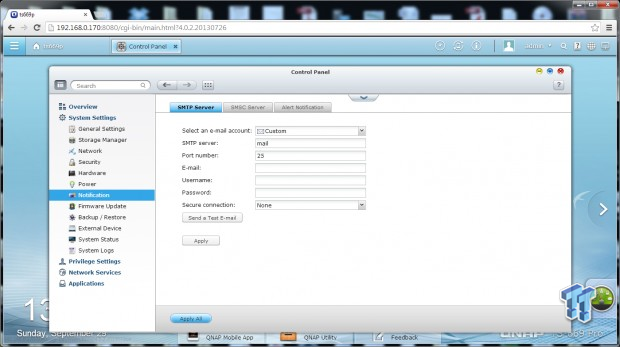
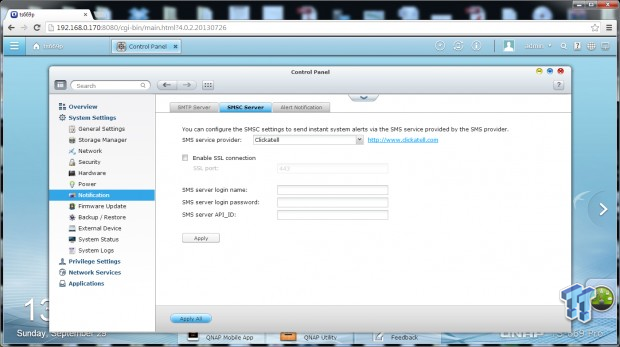
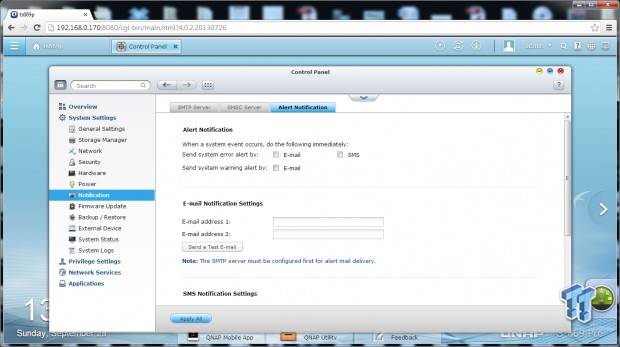
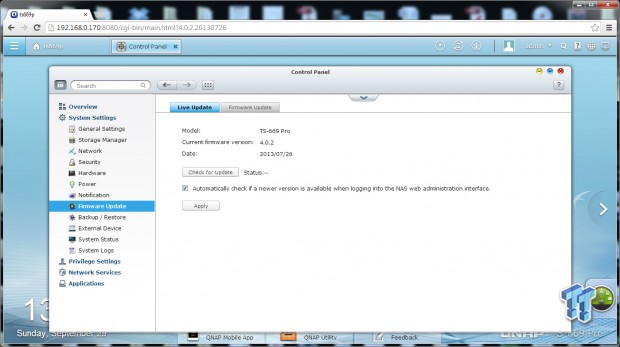
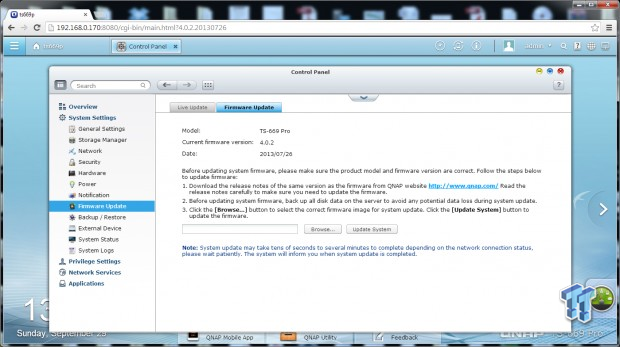
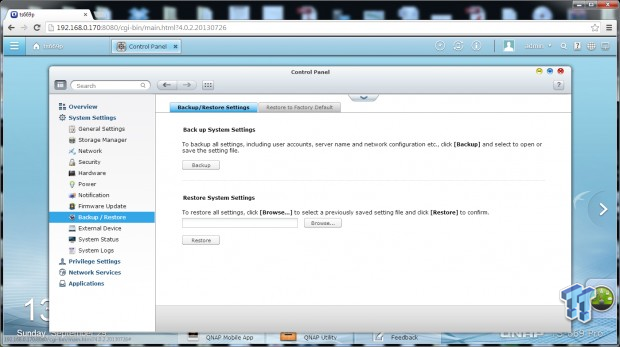
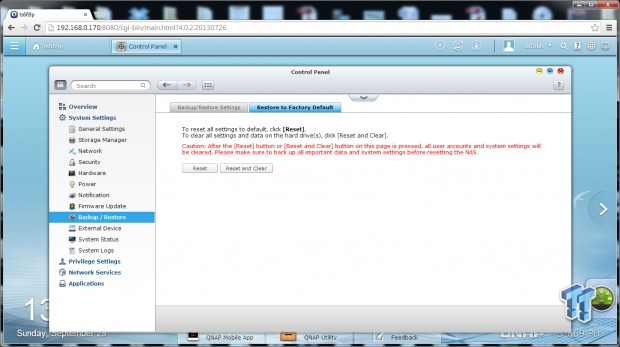
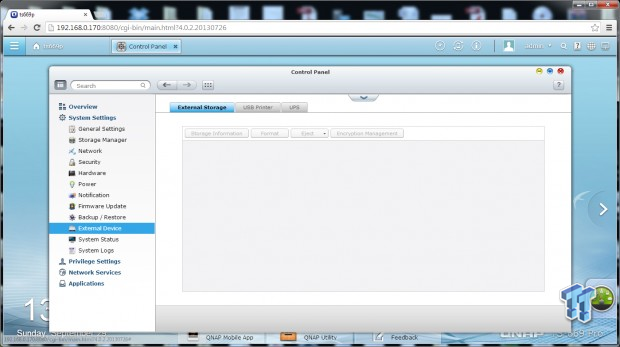
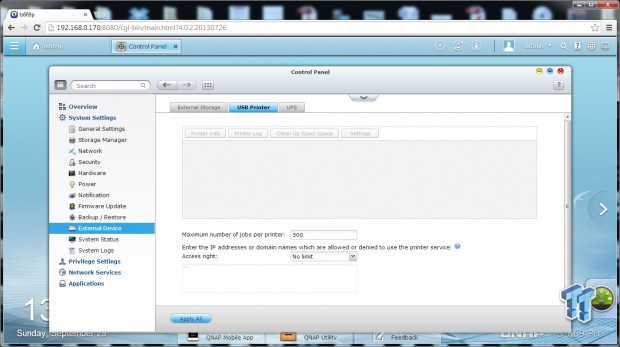
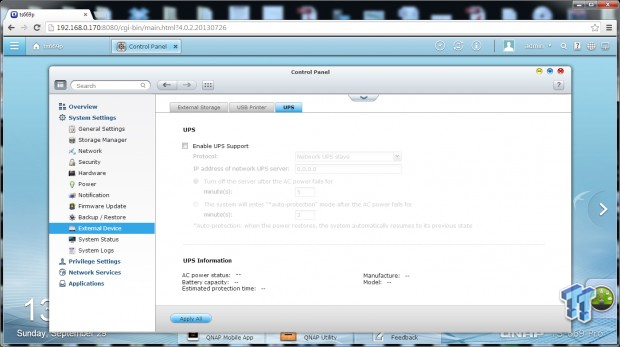
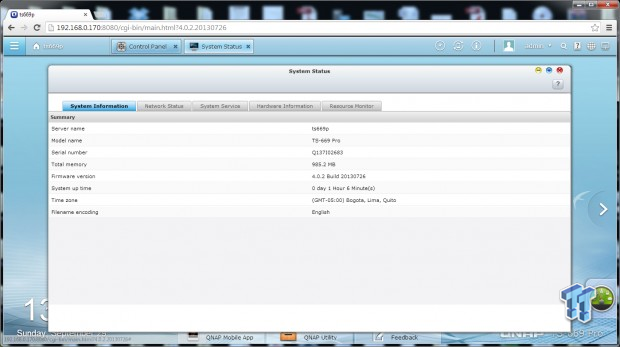
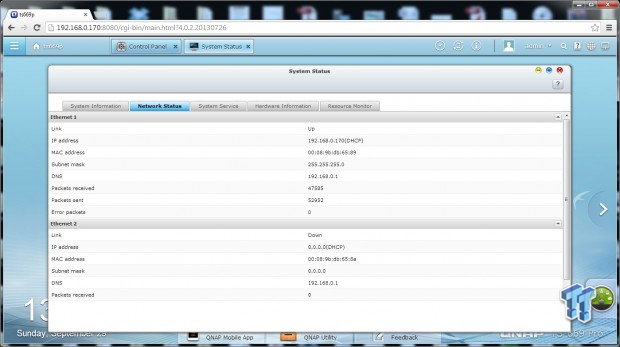
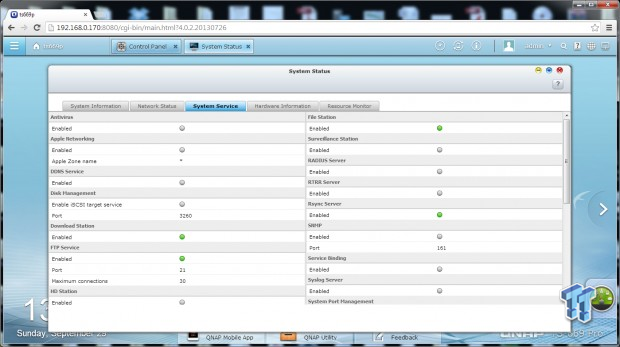
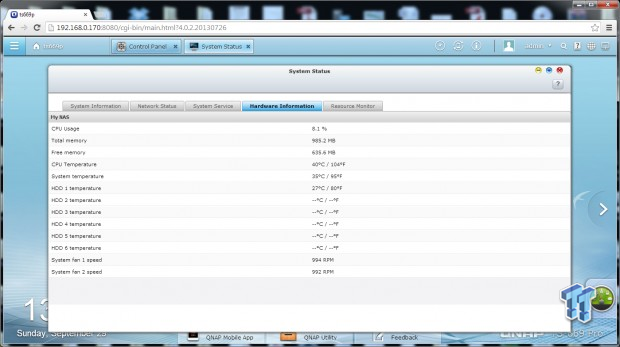
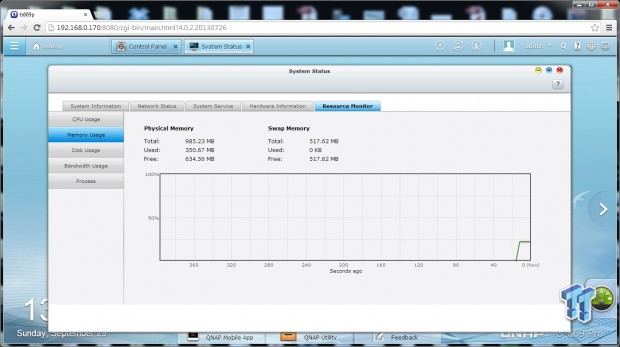
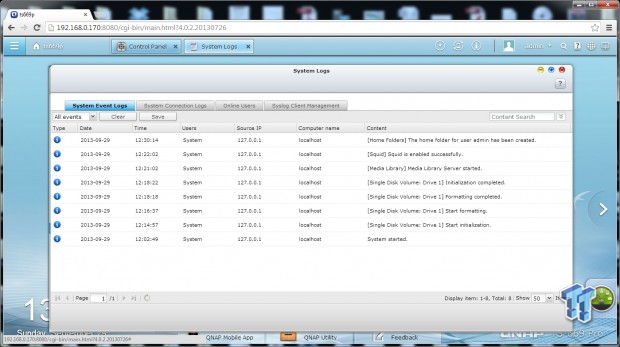

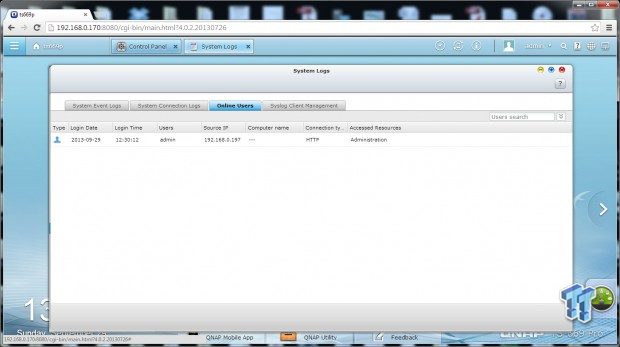
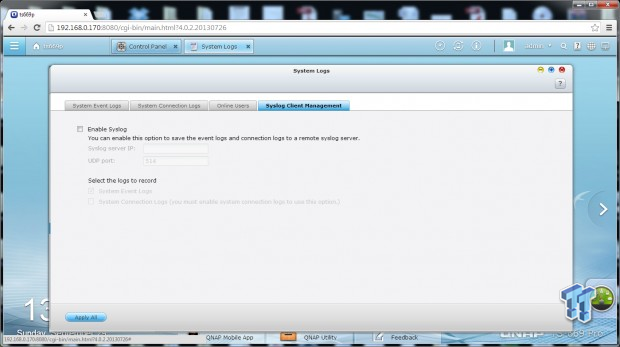
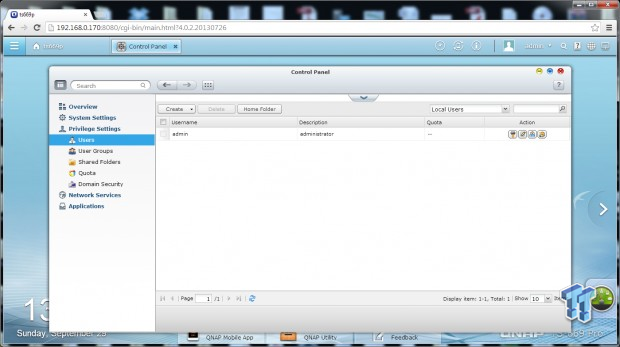
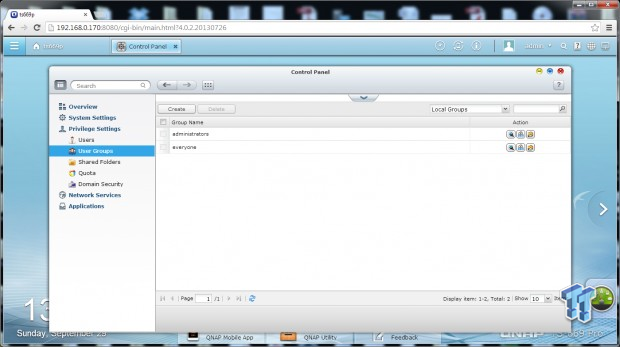
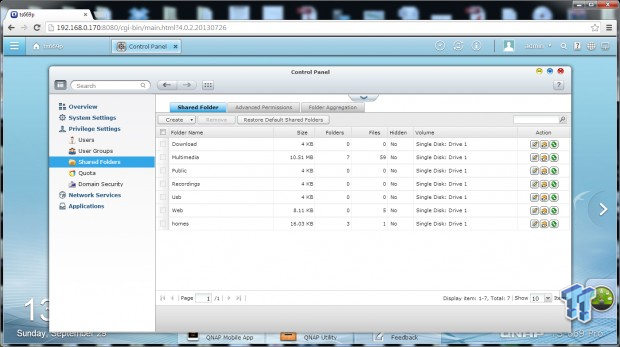
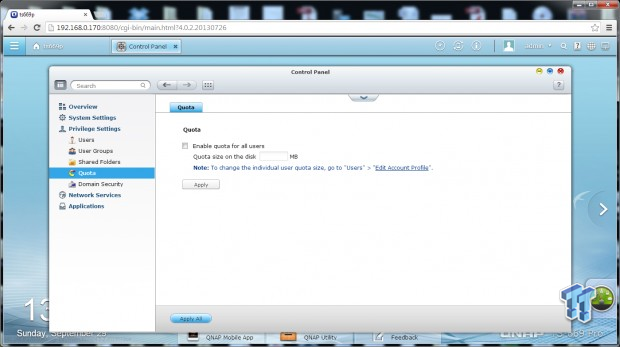

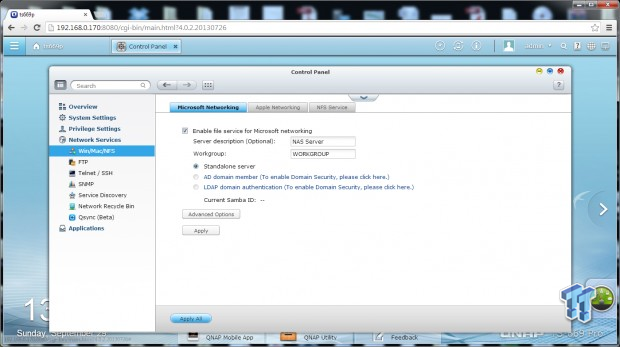
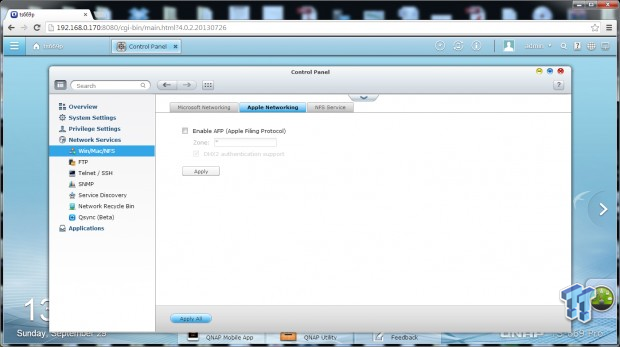
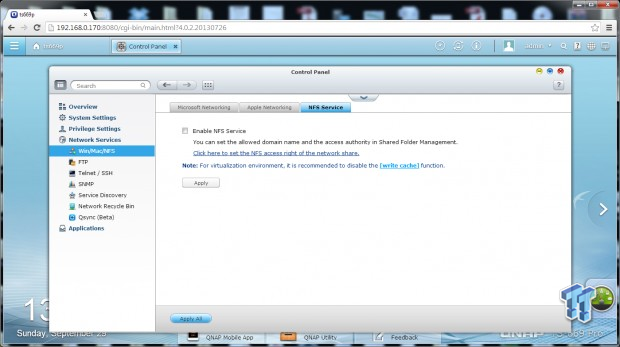
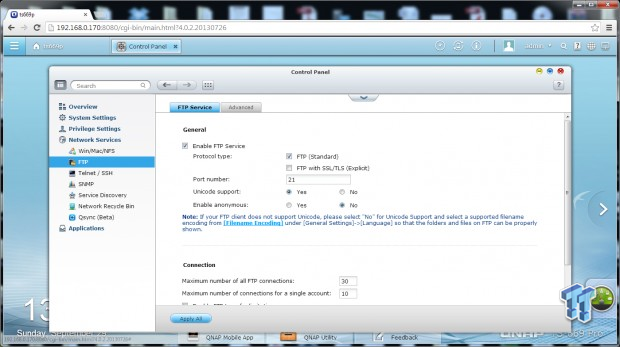
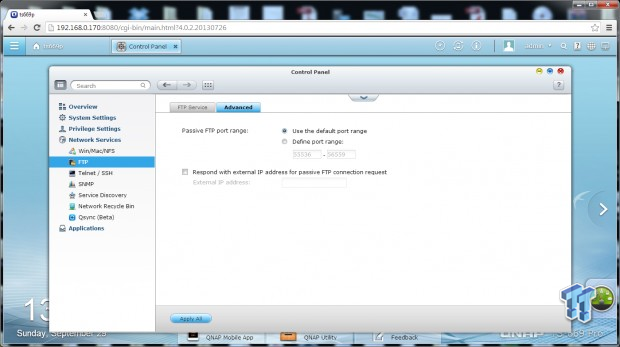
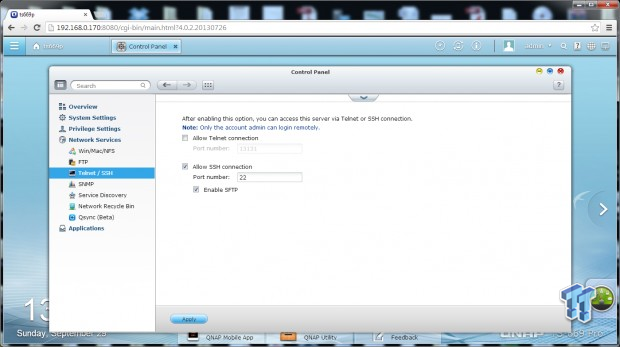
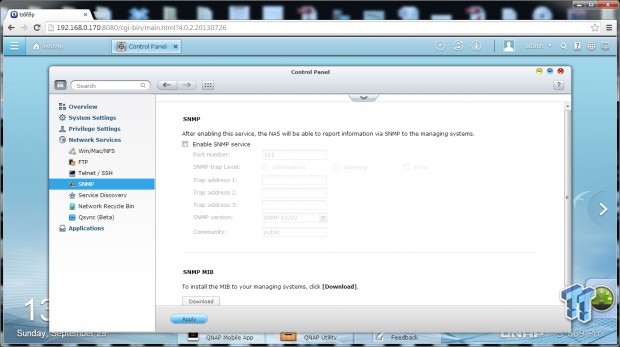
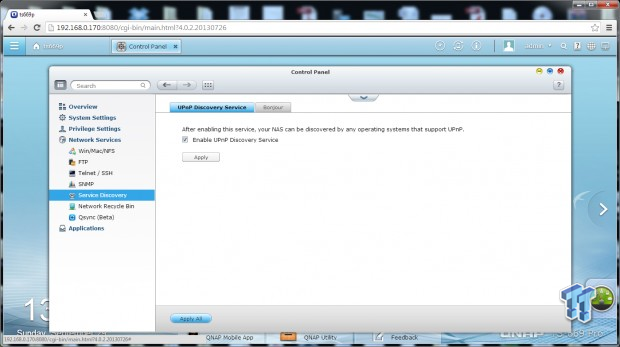
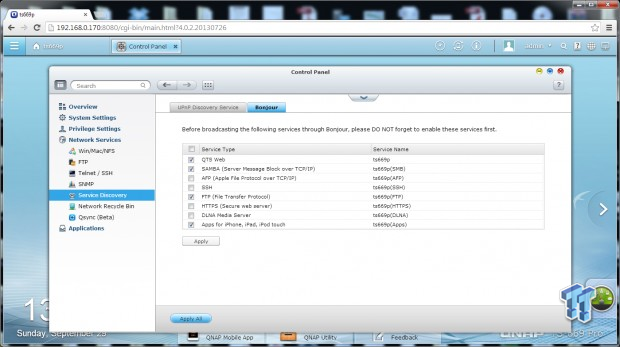
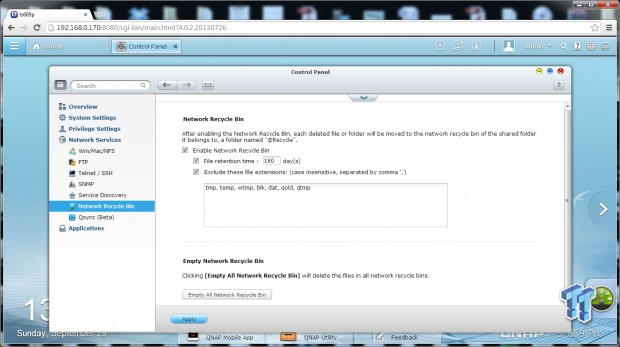

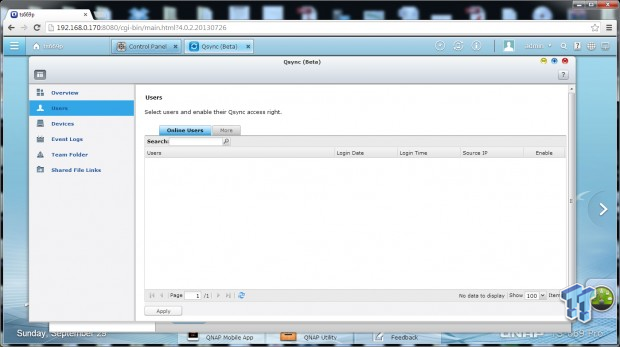
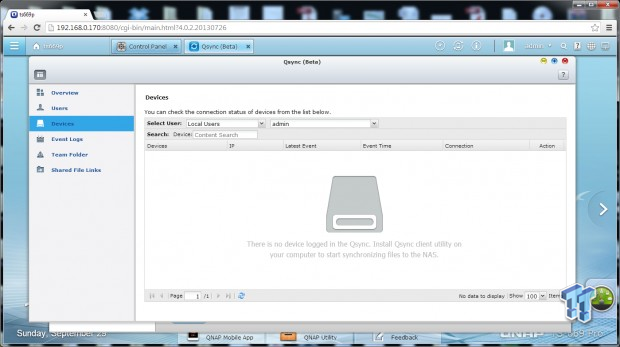

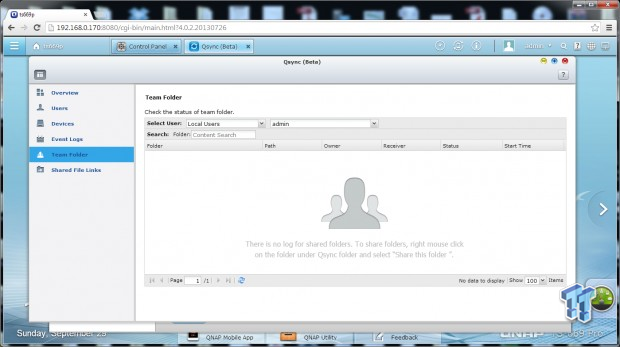
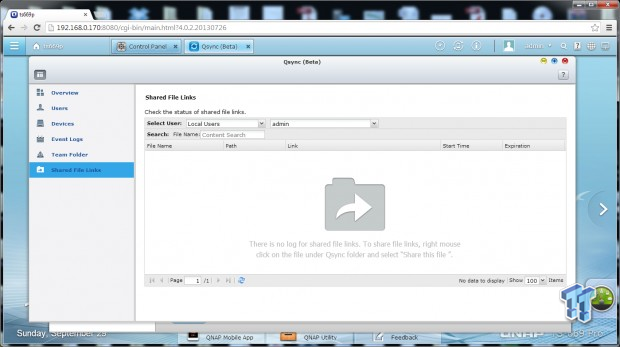
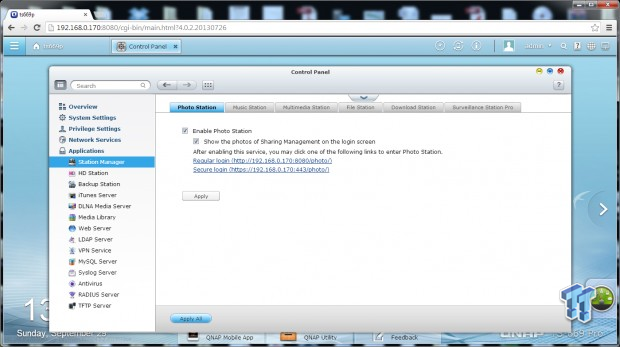
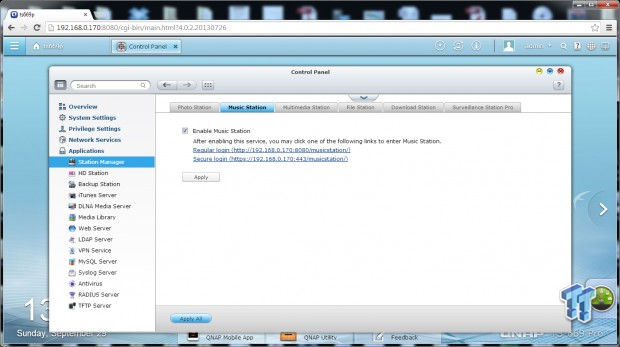
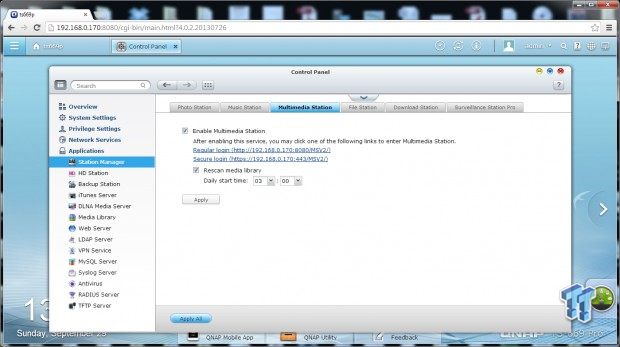
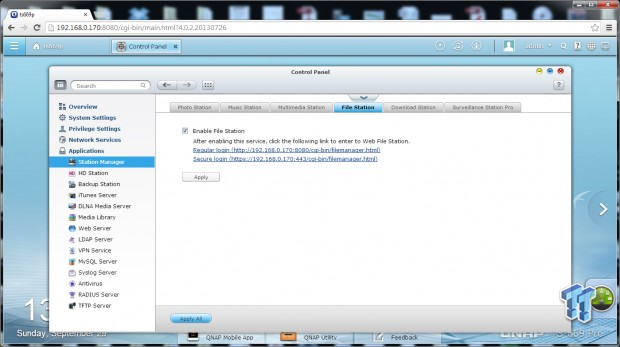
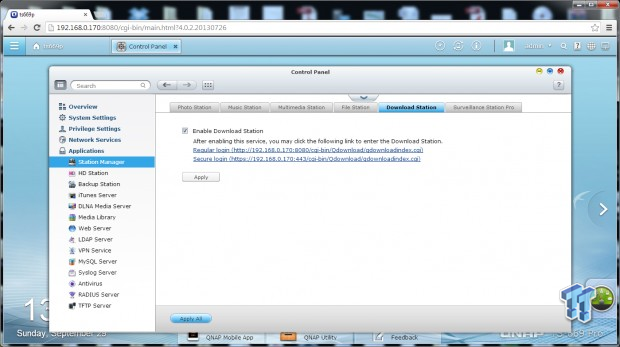
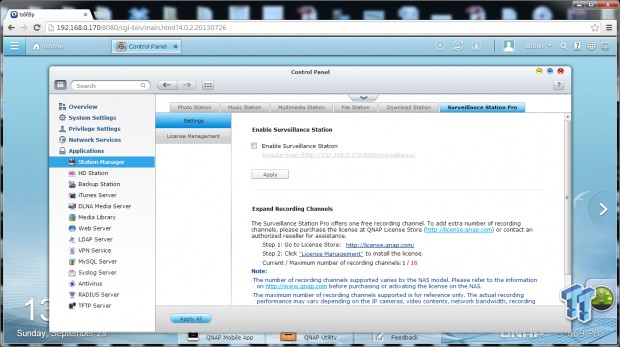
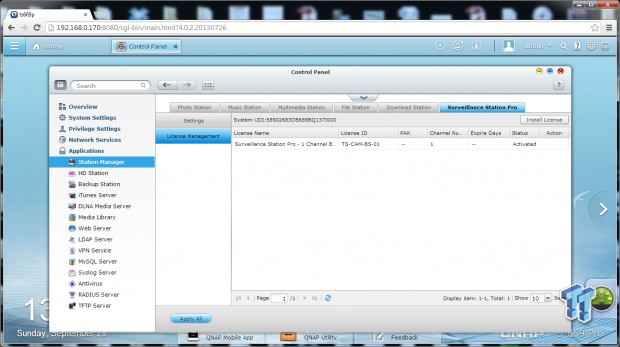
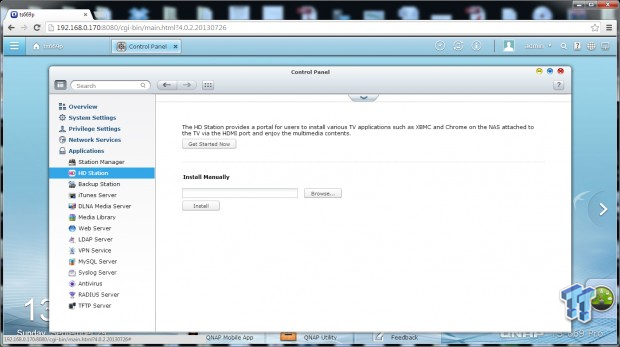
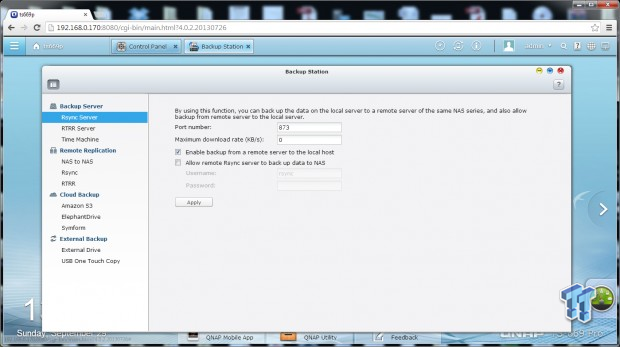
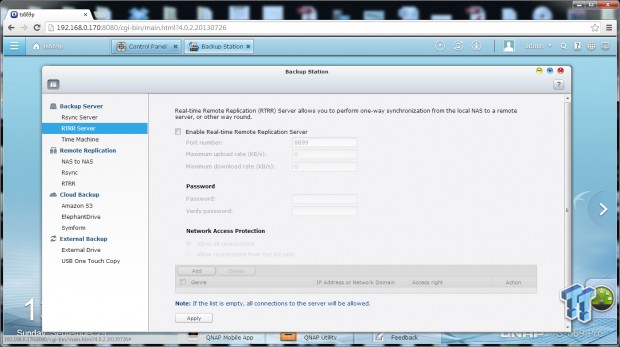
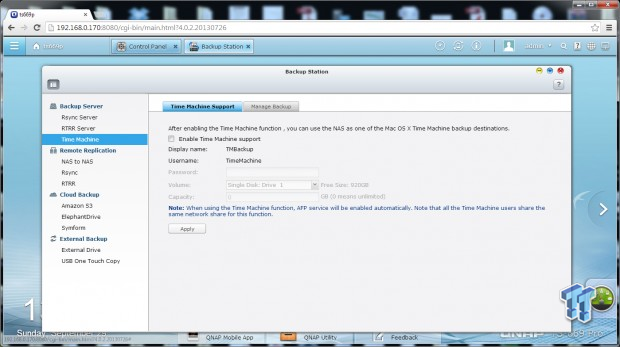
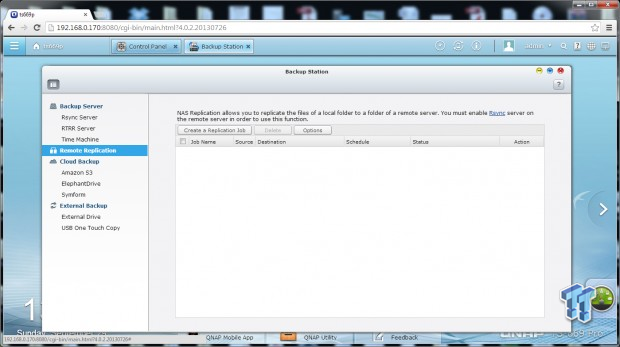
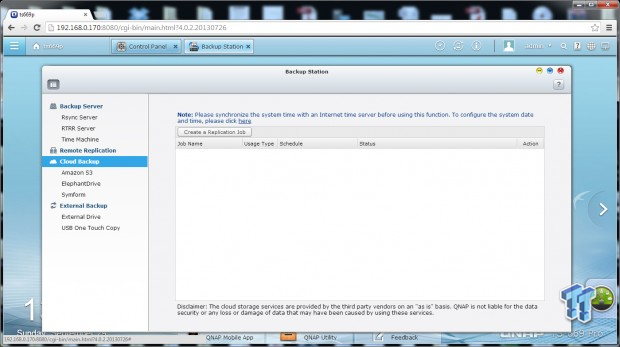
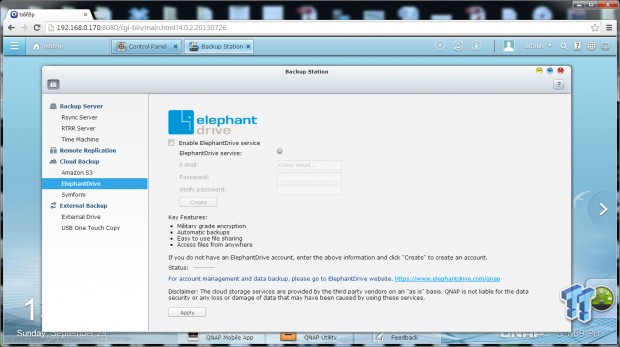
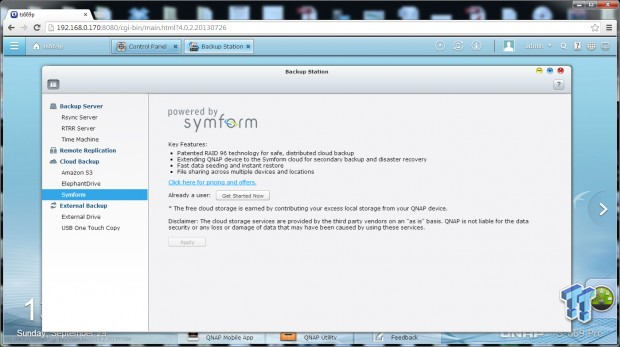
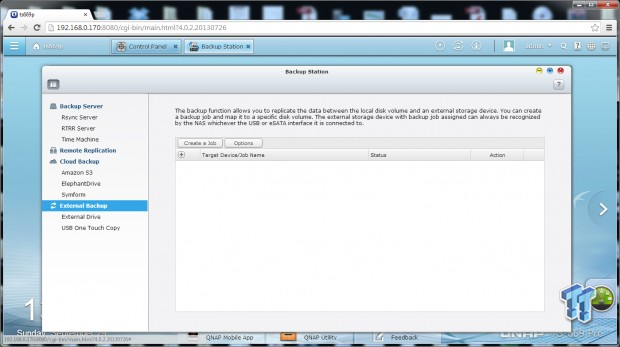
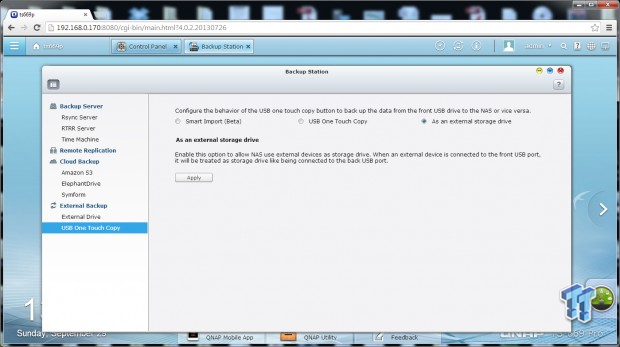
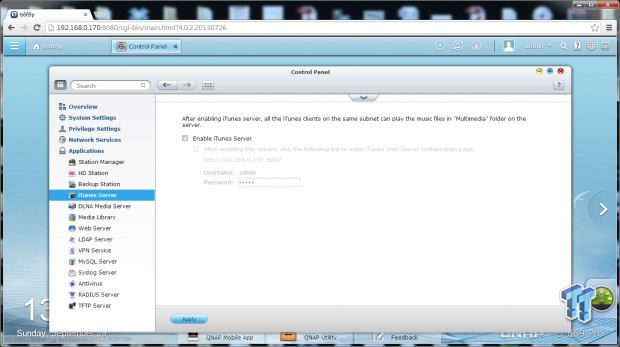
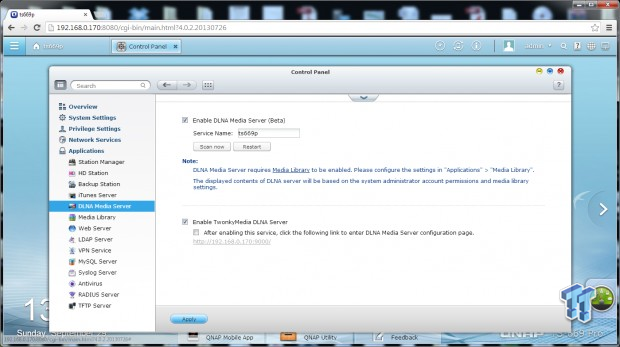
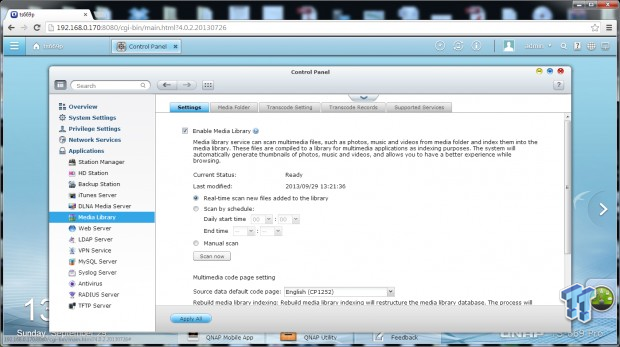

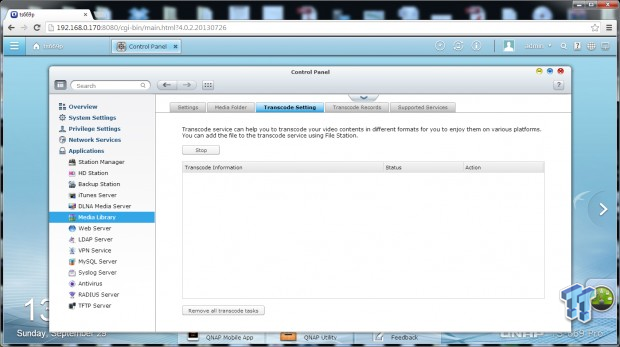
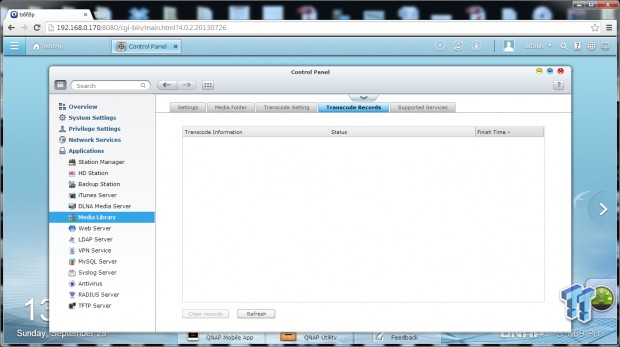
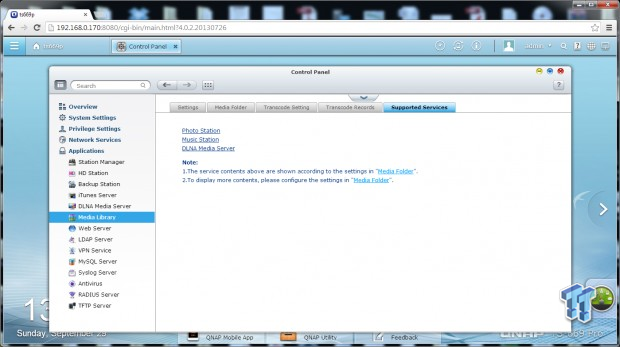
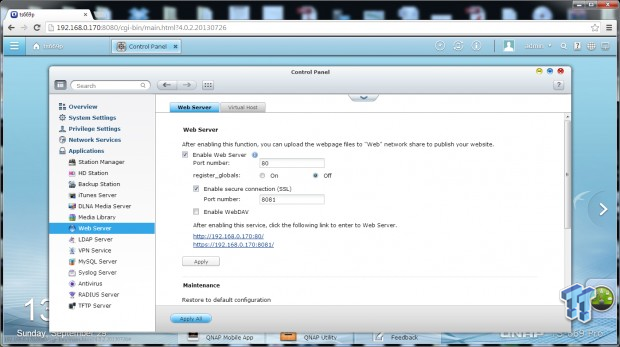
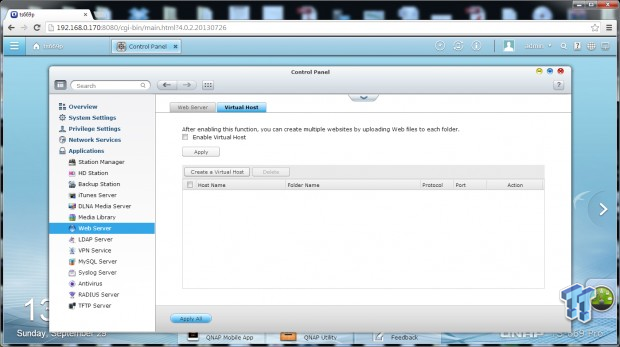
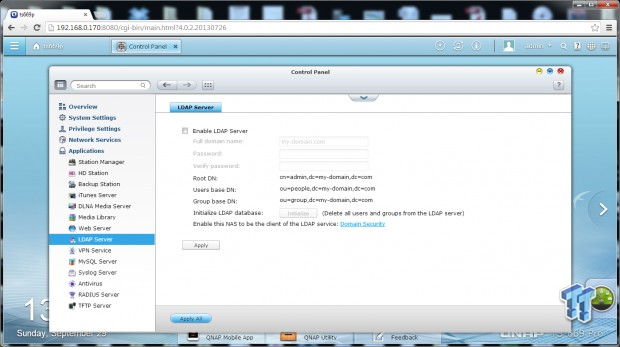
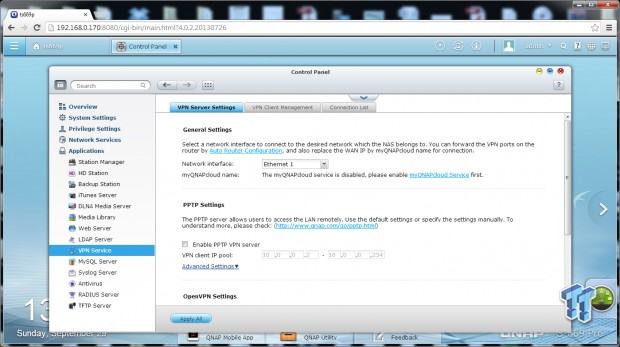
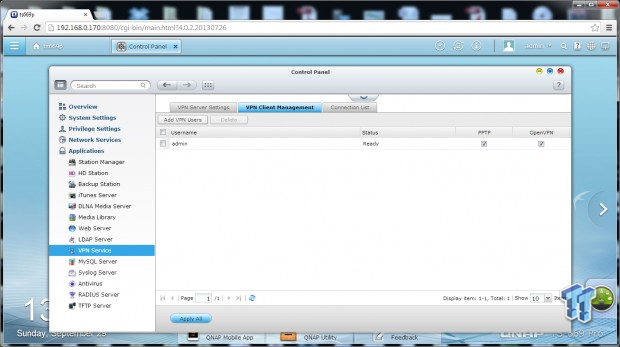

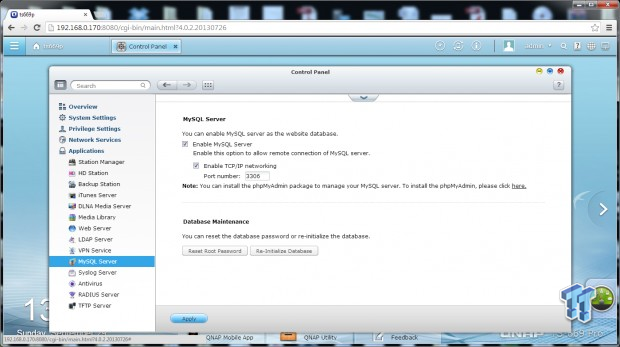
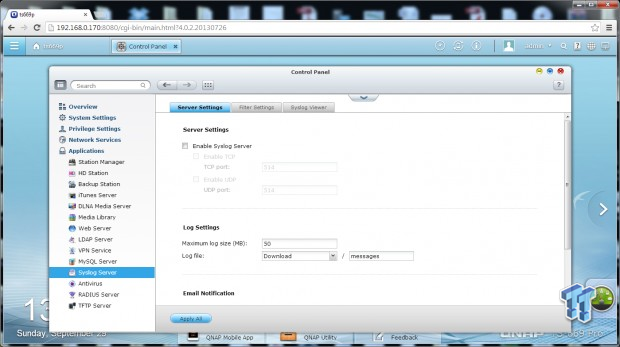

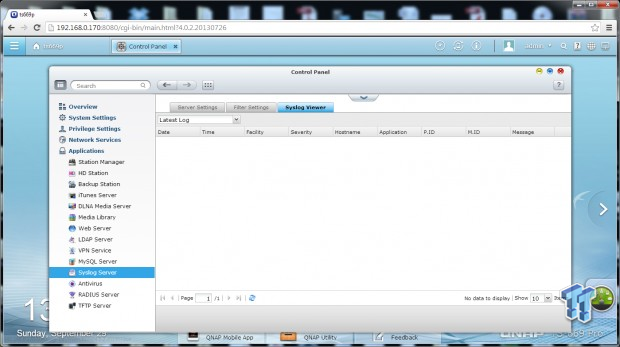
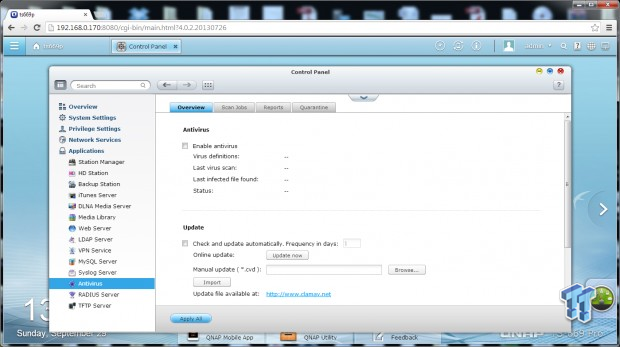


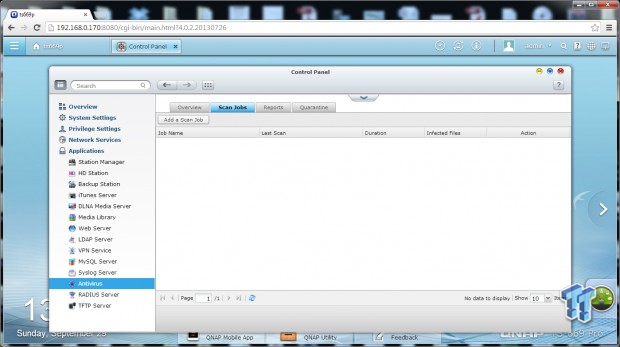
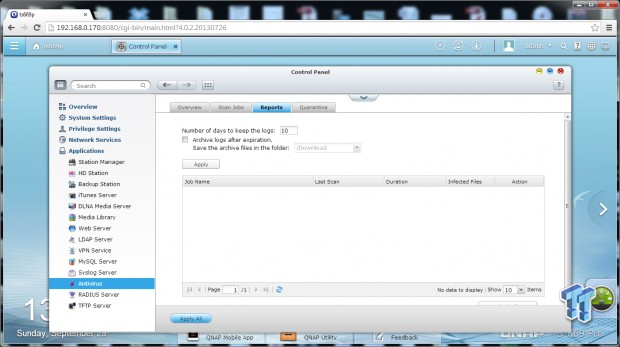
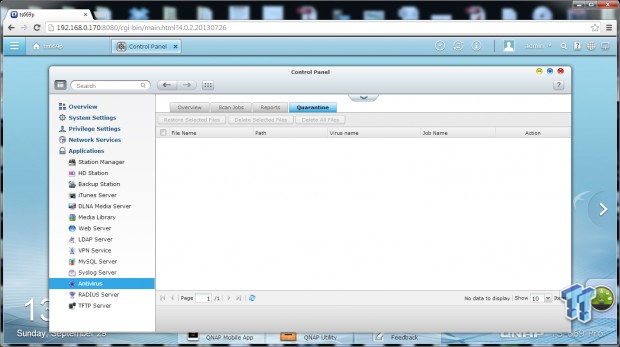
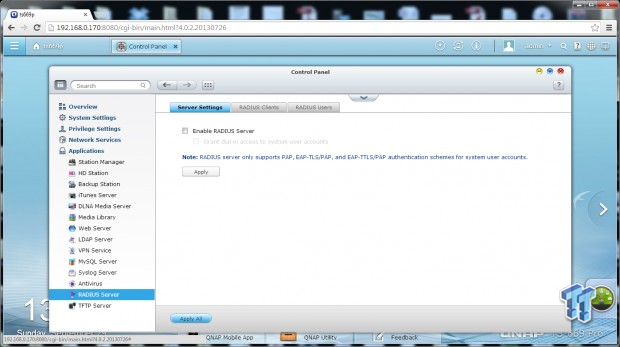
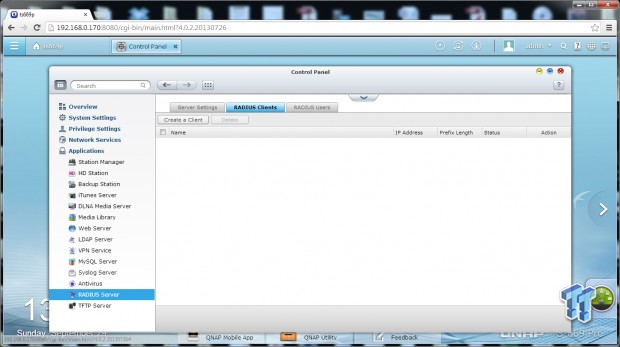

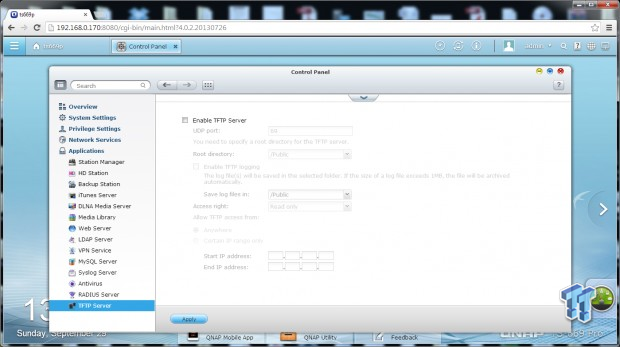
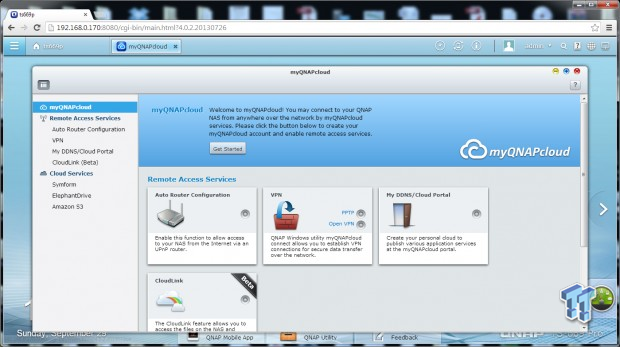
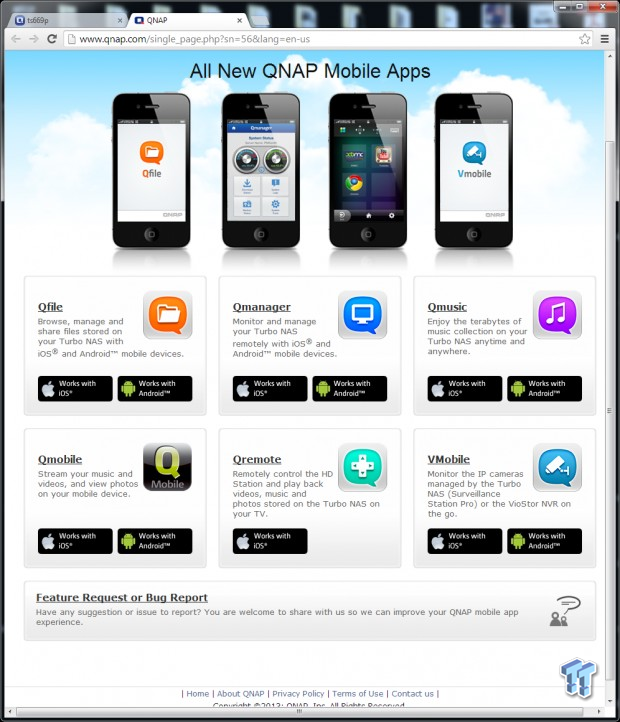
Test System Setup
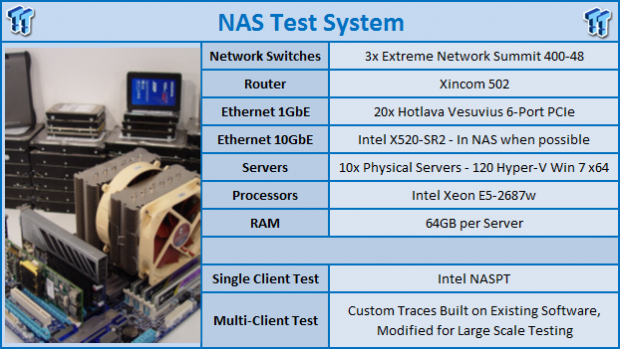
Our NAS test 'system' has migrated to a full 45u rack like what you'd find in a datacenter. There are ten servers that attack the target NAS with 120 Hyper-V installations of Windows 7 64-bit, each with a dedicated gigabit Ethernet port. The systems feed to three Extreme Networks Summit 400-48 switches that link together via Extreme Network's proprietary link cable system. One switch has a two 10GbE Xenpak adapters installed. When testing NAS products with 10GbE capability, the NAS connects to the switch via single or dual 10GbE courtesy of an Intel X520-SR2 installed in the NAS.
This level of testing wouldn't be possible without the help and support from several companies, many of which have little to do with NAS products. We would like to thank AVADirect, Antec, Corsair, GIGABYTE, Icy Dock, Kingston, LSI, Noctua, Rosewill and Western Digital for their much-appreciated support.
Intel NASPT
The Intel NAS Performance Toolkit (NASPT) is a file system exerciser and analysis tool designed to enable direct measurement of home network attached storage (NAS) performance. Designed to emulate the behavior of an actual application, NASPT uses a set of real-world workload traces gathered from typical digital home applications. Traces of high definition video playback and recording, office productivity applications, video rendering/content creation and more provide a broad range of different application behaviors.
TweakTown Custom 120-Client Office Test
The TweakTown Custom 120-client Office Test uses 120 Windows 7 Hyper-V installations and custom software to stress each NAS with traces from Microsoft Office tasks. Both throughput (in Mbits per second) and latency (in milliseconds) are measured.
Western Digital RED - The NAS HDD
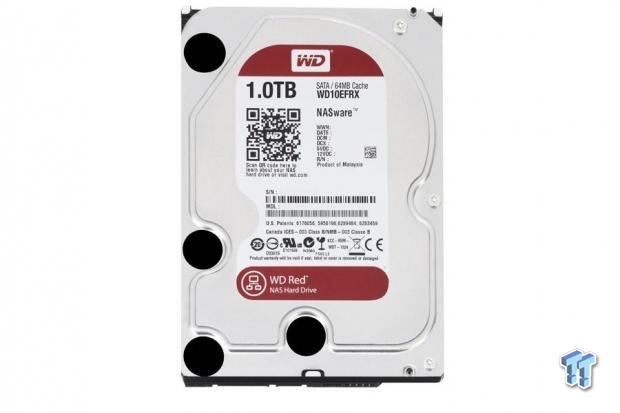
TweakTown uses Western Digital RED 1TB hard drives for all of our NAS tests. You can read our full review of the Western Digital RED 1TB here.
Benchmarks - 1 HDD / JBOD
JBOD: A single or combined multiple drives and capacities linked together to form a single drive.
Note - No Data Redundancy
HD Video Playback
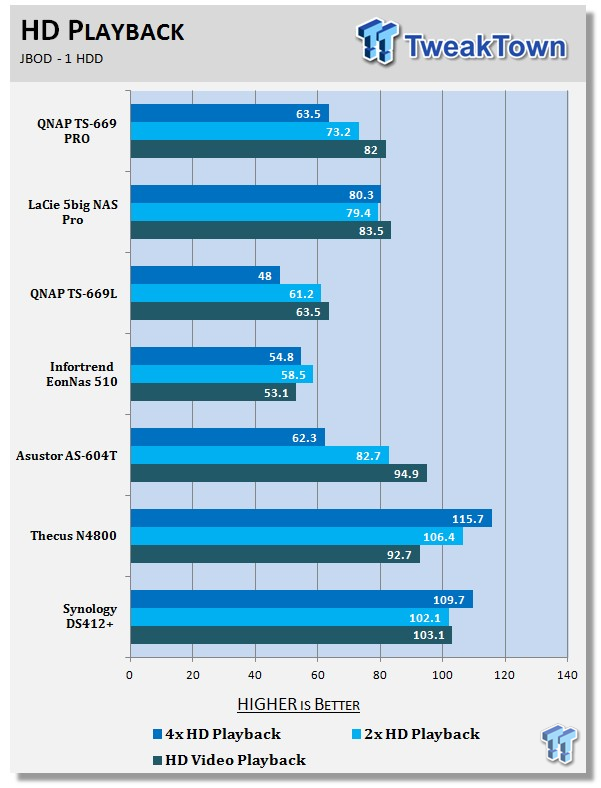
HD Video Play - 720p HD stream from Windows Media Player* 256kB reads
2HD Video Play - 2x playback
4HD Video Play - 4x playback
HD Video Record
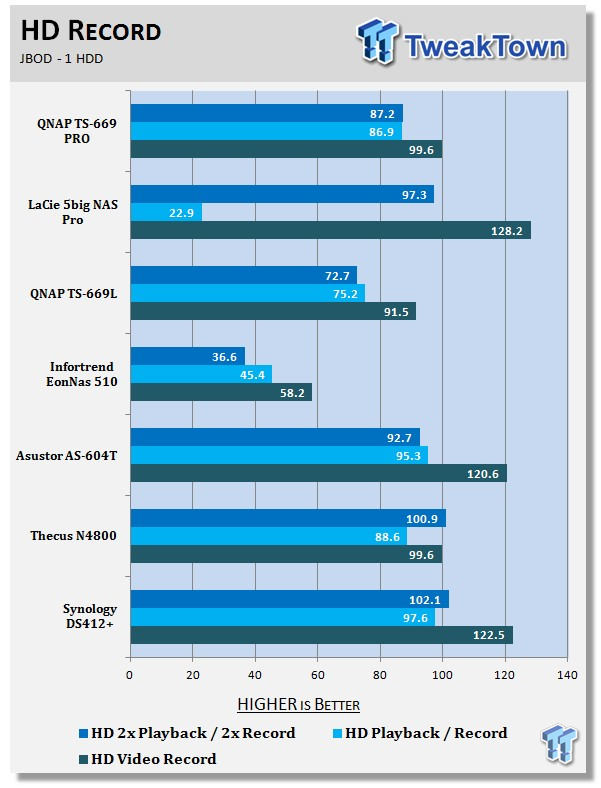
HD Video Record - 720p HD stream, 256kB writes
HD Video Play & Record - 1 playback, 1 record simultaneously
2x HD Video Play & 2x Record - 2 playback, 2 record simultaneously
Content Creation
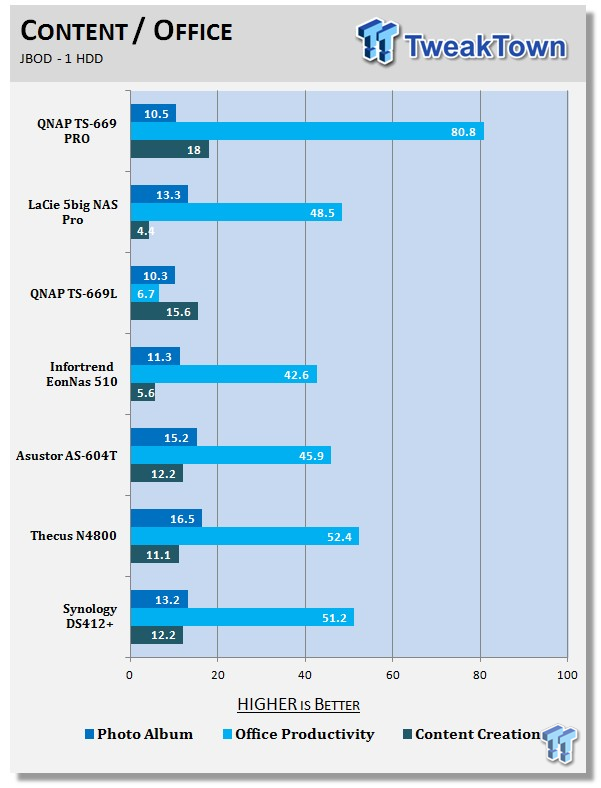
Photo Album - All reads - wide distribution of sizes
Office Productivity - Reads and writes, 1kB & 4kB reads; Mostly 1kB writes
Content Creation - 95% writes; 1k, 4k & little reads; Writes up to 64kB
File / Directory Transfer
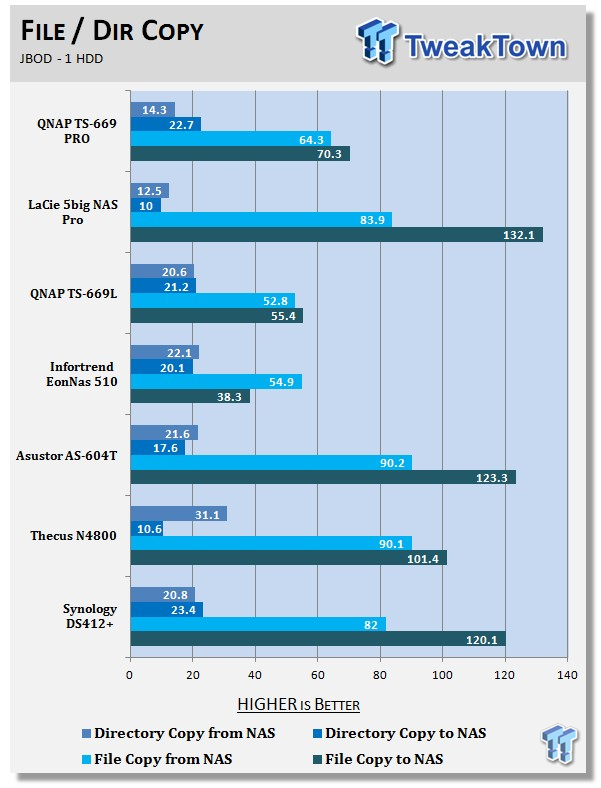
Directory Copy From NAS - 64kB reads
Directory Copy To NAS - Predominantly 64kB writes, wide scattering under 16kB
File Copy From NAS - 4GB file copy, 64kB reads
File Copy To NAS - 64kB writes
One of the easiest ways to start with a NAS is to purchase your NAS and use an existing drive until more HDDs are purchased.
Benchmarks - 6 HDD / RAID 0
RAID 0: Normally used to increase performance and useful for setups such as large read-only NFS servers where mounting many disks is time-consuming or impossible and redundancy is irrelevant.
HD Video Playback
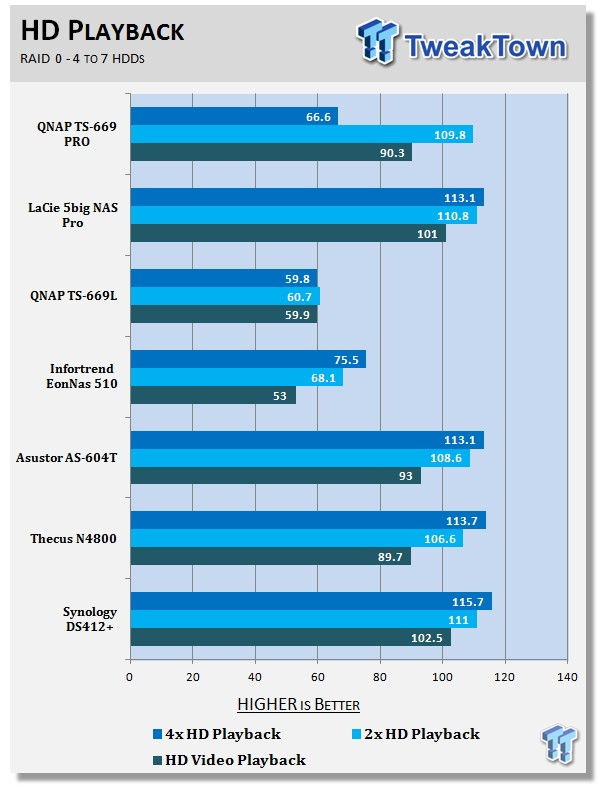
HD Video Play - 720p HD stream from Windows Media Player 256kB reads
2HD Video Play - 2x playback
4HD Video Play - 4x playback
HD Video Record
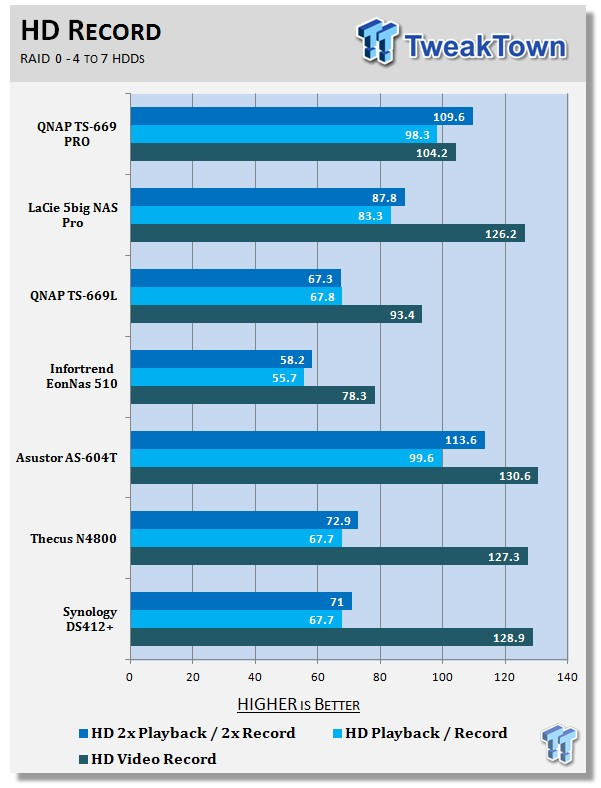
HD Video Record - 720p HD stream, 256kB writes
HD Video Play & Record - 1 playback, 1 record simultaneously
2x HD Video Play & 2x Record - 2 playback, 2 record simultaneously
Content Creation
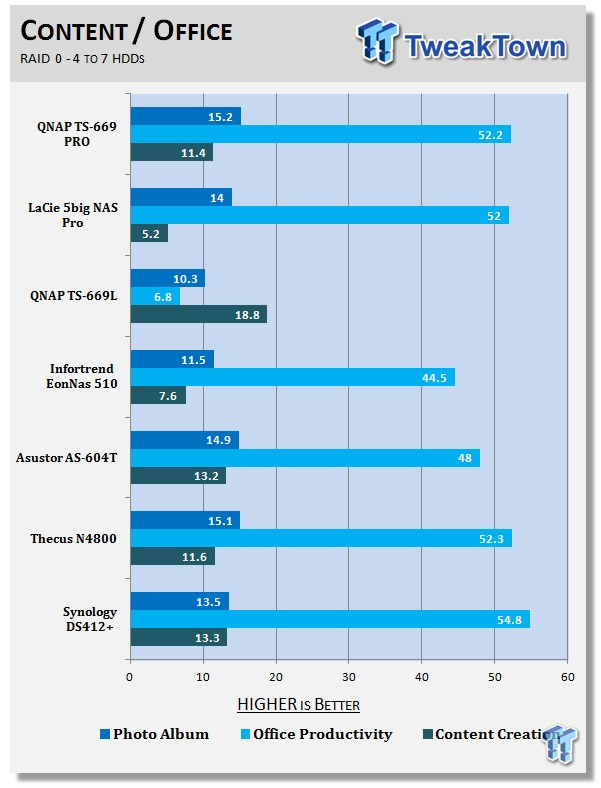
Photo Album - All reads - wide distribution of sizes
Office Productivity - Reads and writes, 1kB & 4kB reads; Mostly 1kB writes
Content Creation - 95% writes; 1k, 4k & little reads; Writes up to 64kB
File / Directory Transfer
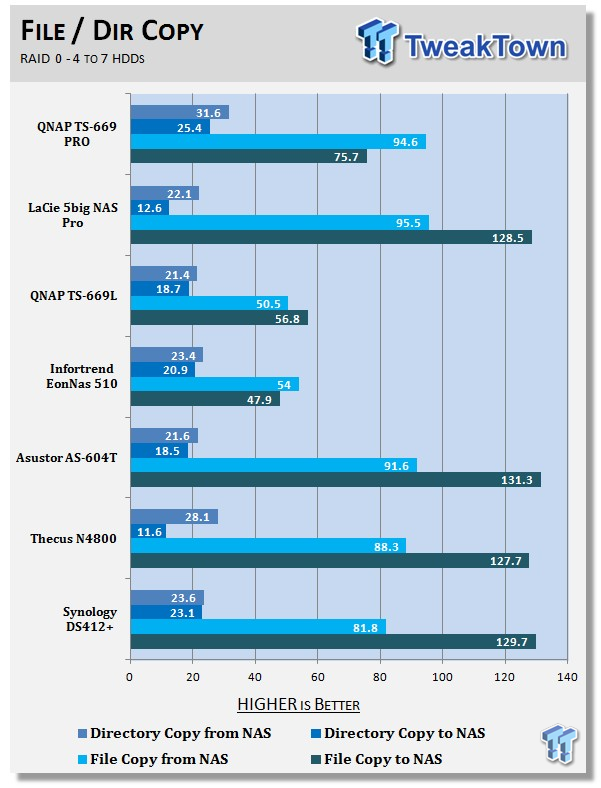
Directory Copy From NAS - 64kB reads
Directory Copy To NAS - Predominantly 64kB writes, wide scattering under 16kB
File Copy From NAS - 4GB file copy, 64kB reads
File Copy To NAS - 64kB writes
Benchmarks - 6 HDD / RAID 10
RAID 10: A Stripe of Mirrors. Multiple RAID 1 mirrors are created and a RAID 0 stripe is created over these.
HD Video Playback
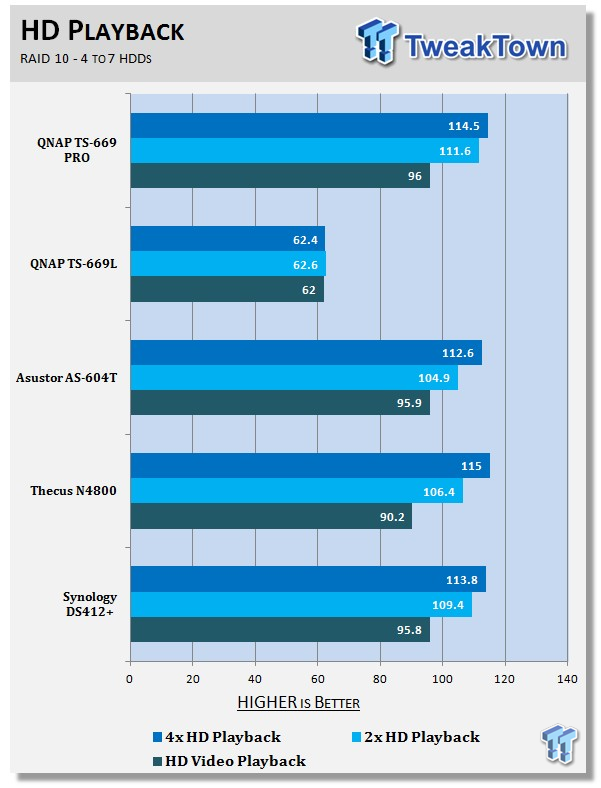
HD Video Play - 720p HD stream from Windows Media Player* 256kB reads
2HD Video Play - 2x playback
4HD Video Play - 4x playback
HD Video Record
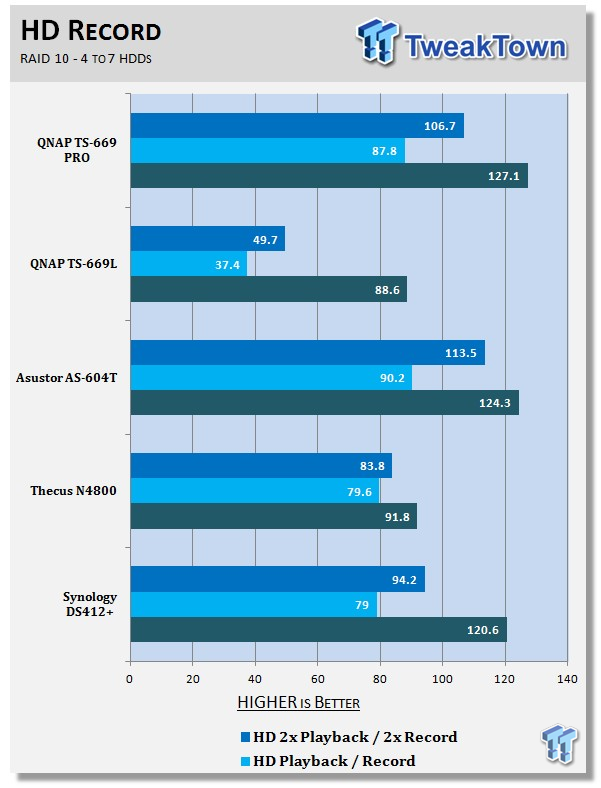
HD Video Record - 720p HD stream, 256kB writes
HD Video Play & Record - 1 playback, 1 record simultaneously
2x HD Video Play & 2x Record - 2 playback, 2 record simultaneously
Content Creation
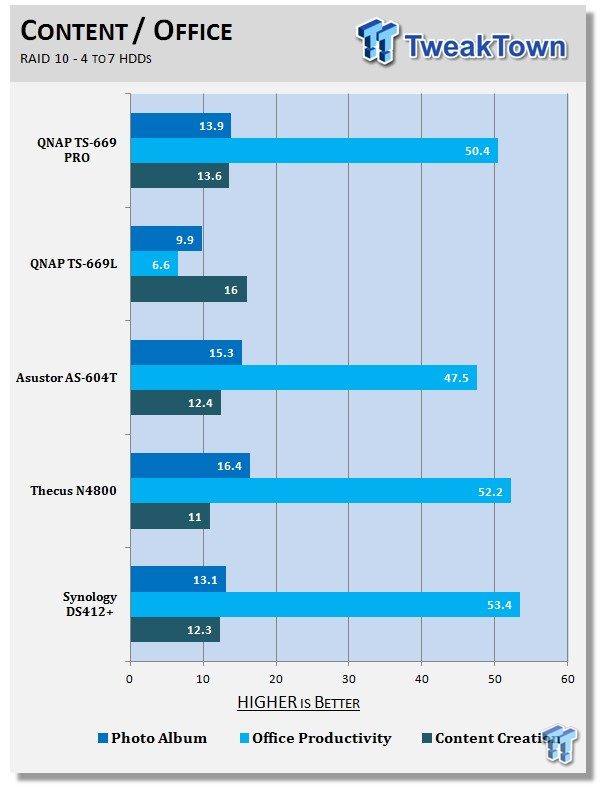
Photo Album - All reads - wide distribution of sizes
Office Productivity - Reads and writes, 1kB & 4kB reads; Mostly 1kB writes
Content Creation - 95% writes; 1k, 4k & little reads; Writes up to 64kB
File / Directory Transfer
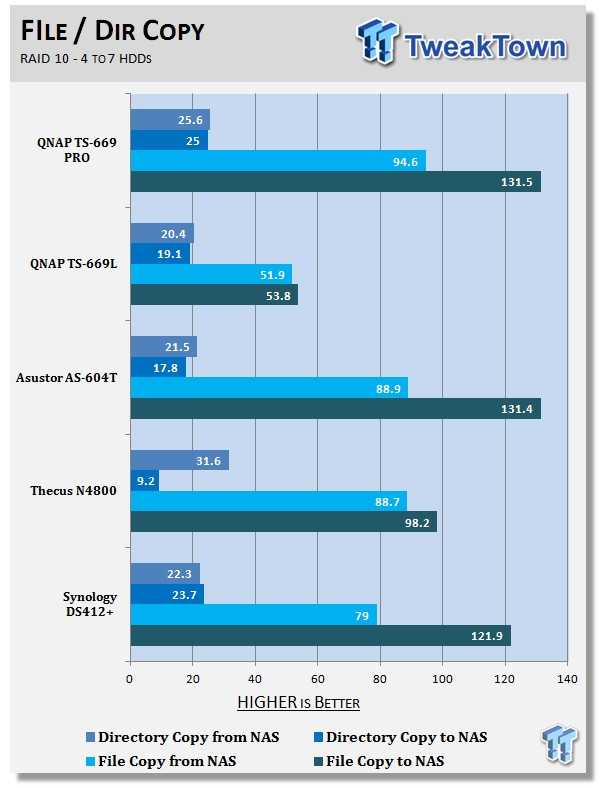
Directory Copy From NAS - 64kB reads
Directory Copy To NAS - Predominantly 64kB writes, wide scattering under 16kB
File Copy From NAS - 4GB file copy, 64kB reads
File Copy To NAS - 64kB writes
Benchmarks - 6 HDD / RAID 5
RAID 5: Use block-level striping with parity data distributed across all member disks.
HD Video Playback
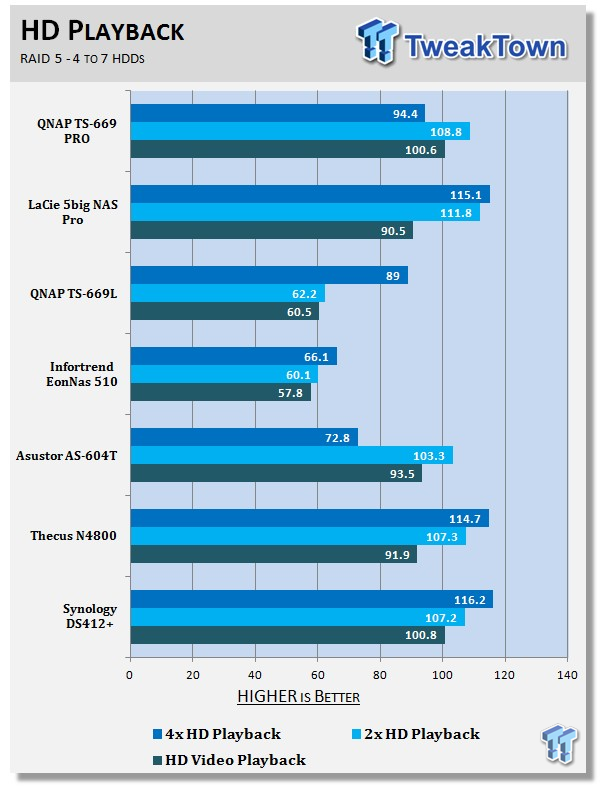
HD Video Play - 720p HD stream from Windows Media Player 256kB reads
2HD Video Play - 2x playback
4HD Video Play - 4x playback
HD Video Record
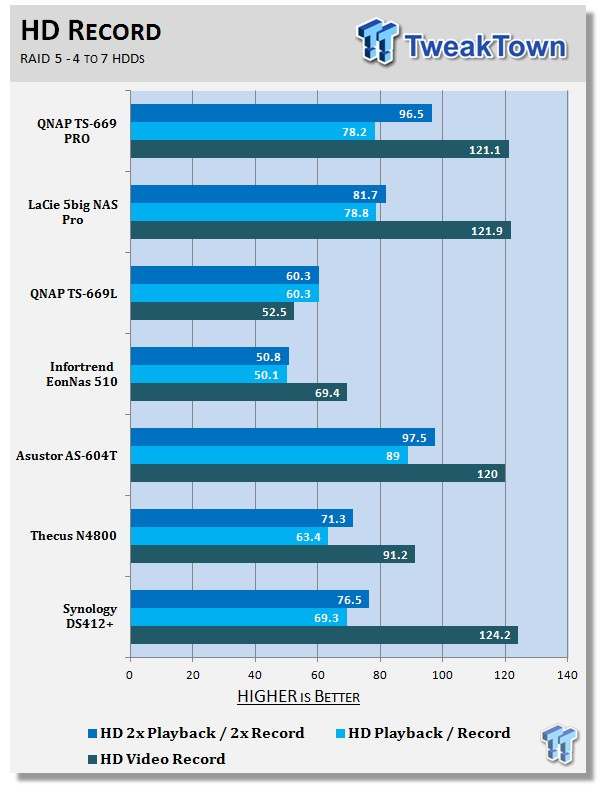
HD Video Record - 720p HD stream, 256kB writes
HD Video Play & Record - 1 playback, 1 record simultaneously
2x HD Video Play & 2x Record - 2 playback, 2 record simultaneously
Content Creation
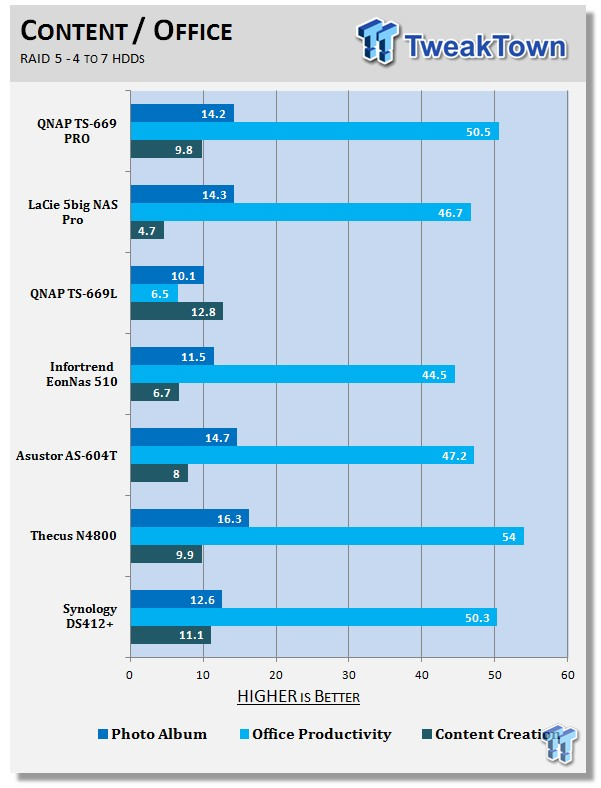
Photo Album - All reads - wide distribution of sizes
Office Productivity - Reads and writes, 1kB & 4kB reads; Mostly 1kB writes
Content Creation - 95% writes; 1k, 4k & little reads; Writes up to 64kB
File / Directory Transfer
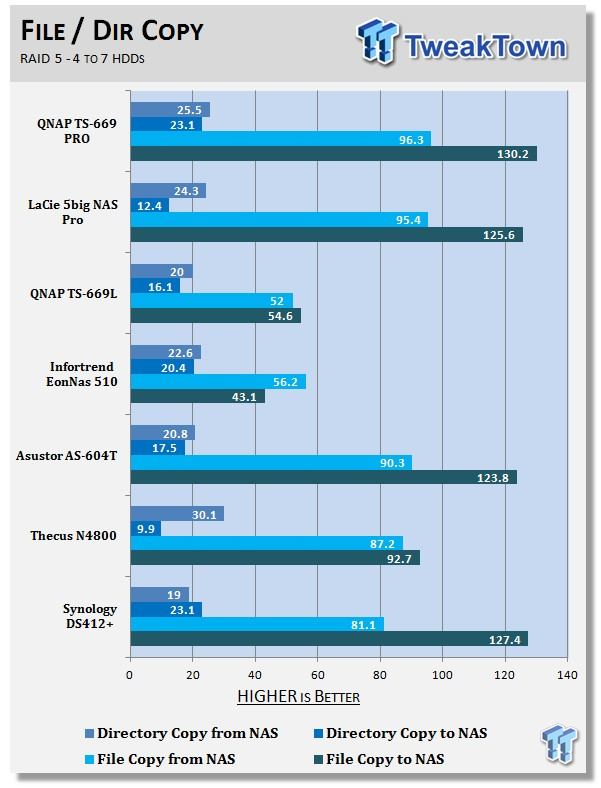
Directory Copy From NAS - 64kB reads
Directory Copy To NAS - Predominantly 64kB writes, wide scattering under 16kB
File Copy From NAS - 4GB file copy, 64kB reads
File Copy To NAS - 64kB writes
Benchmarks - 6 HDD / RAID 6 and Single Client Wrap-up
Benchmarks - 6 HDD / RAID 6
RAID 6: Extend RAID 5 by adding an additional parity block; thus it uses block-level striping with two parity blocks distributed across all member disks.
HD Video Playback
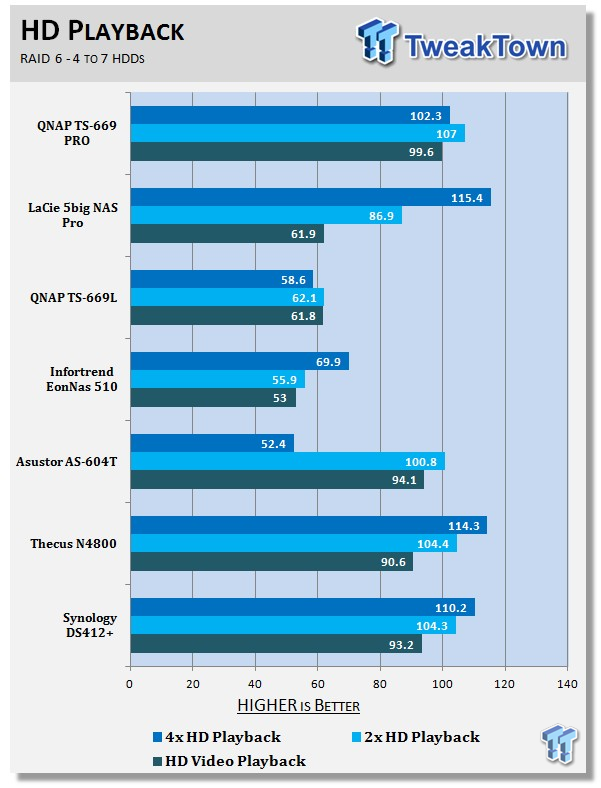
HD Video Play - 720p HD stream from Windows Media Player 256kB reads
2HD Video Play - 2x playback
4HD Video Play - 4x playback
HD Video Record
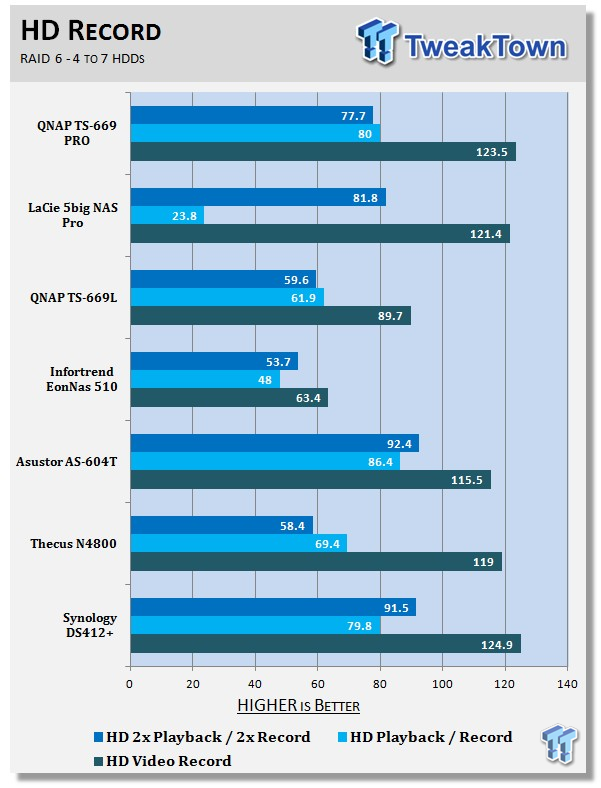
HD Video Record - 720p HD stream, 256kB writes
HD Video Play & Record - 1 playback, 1 record simultaneously
2x HD Video Play & 2x Record - 2 playback, 2 record simultaneously
Content Creation
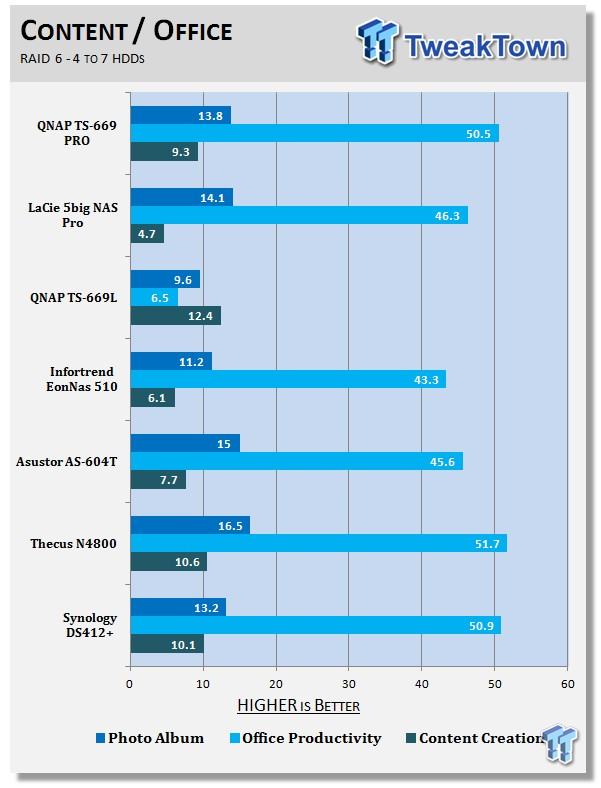
Photo Album - All reads - wide distribution of sizes
Office Productivity - Reads and writes, 1kB & 4kB reads; Mostly 1kB writes
Content Creation - 95% writes; 1k, 4k & little reads; Writes up to 64kB
File / Directory Transfer
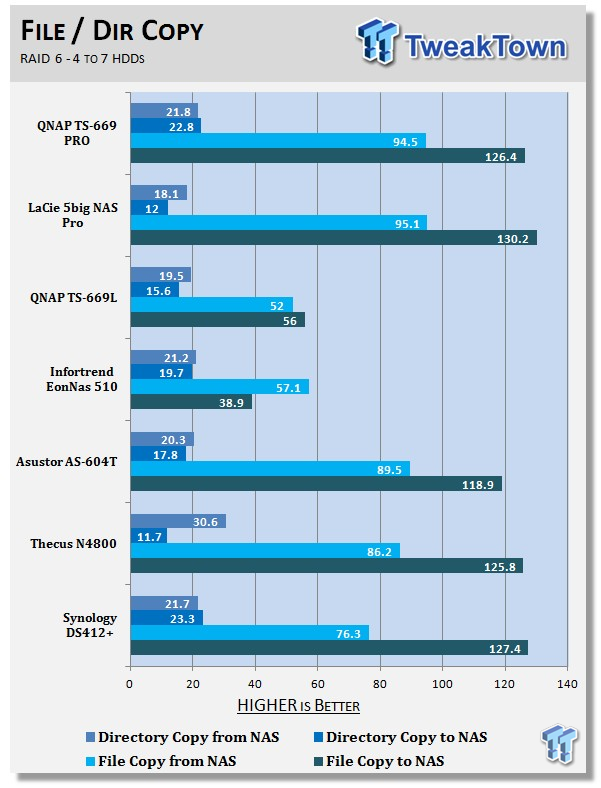
Directory Copy From NAS - 64kB reads
Directory Copy To NAS - Predominantly 64kB writes, wide scattering under 16kB
File Copy From NAS - 4GB file copy, 64kB reads
File Copy To NAS - 64kB writes
Single Client Performance Wrap-up
Since the TS-669L and TS-669 Pro have the same processor and DRAM amount, we have to assume the massive jump in performance between these two models is due to the new QTS 4.0.2 firmware.
The new firmware when paired with the TS-669 Pro doubles performance in some tests when compared to the TS-669L with the older 3-Series firmware.
Looking beyond just QNAP's products, the TS-669 Pro is now as fast and faster in many tests as other manufacture's NAS products.
Benchmarks - Multi-Client Test
The Intel NAS Performance Tool (NASPT) is an excellent way to determine NAS performance in a single user environment. Any review that only uses NASPT assumes that only a single computer will access the target NAS at one time. We took issue with this method of testing and spent over a year designing, building, programming and finally validating the TweakTown Multi-Client Test.
The test uses Microsoft Office data recorded to traces and played back to the NAS from up to 120 client Windows 7 installations (clients). We record total throughput of all clients and average response time per client.
Over time we'll populate the two multi-client charts with several NAS products from a span of categories. The products range from a dual Xeon server with 2x 10GbE to a 2-bay NAS with a single gigabit Ethernet connection. The products will fall into their performance categories based on performance and not marketing material or opinion.
Throughput
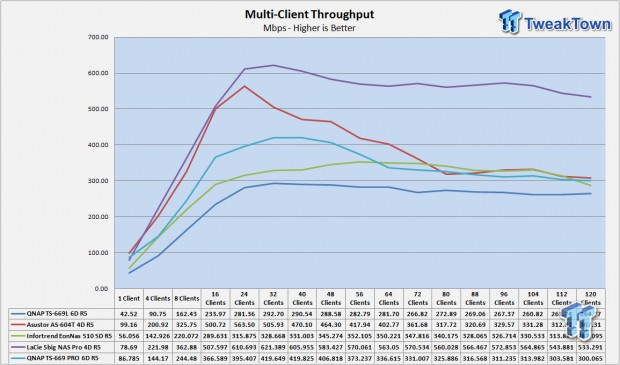
In our multi-client test, we observed a noticeable improvement in performance from the TS-669L to the TS-669 Pro, again mainly due to the new firmware.
The peak throughput was considerably higher and the highest performance came later in the test. That means more clients can use the NAS in an office environment before reaching peak performance.
Latency
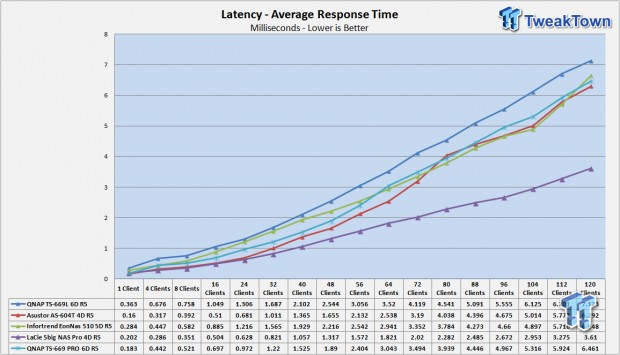
The new firmware reduced the latency by a large margin as well. This means the firmware is more responsive when working with files on the NAS in an office environment.
Final Thoughts

We've turned this article into more than just a review of the QNAP TS-669 Pro. The new firmware changes the system, from the performance to the user experience. The new software makes configuring the NAS easier and adds even more features to an already exhaustive list. The increase in performance is nothing to over look either.
Starting with the new firmware, QTS 4.0.2 brings new features to an already feature-rich operating system. When we first tested the new software, we had out doubts, but after spending time with the final build, we think it's brilliant. The system setup is easier than ever before and adding additional features from the new packages menu is now just a few click process.
The new firmware also increases performance, something we've observed on three QNAP products in our lab so far. Over the last six months, some of the other NAS manufactures pulled away from QNAP when it came to performance, but that is no longer the case. QNAP is once again a competitor when it comes the performance crown.
The TS-669 Pro is the perfect unit to get the most out of the new firmware. With six drive bays, dual gigabit Ethernet ports and a plethora of I/O options including HDMI, the unit can take advantage of all the additional software features. The TS-669 Pro is designed for small business use, but it's powerful enough to reach into the next tier and packed with features that also makes it desirable for home users as well.


 United
States: Find other tech and computer products like this
over at
United
States: Find other tech and computer products like this
over at  United
Kingdom: Find other tech and computer products like this
over at
United
Kingdom: Find other tech and computer products like this
over at  Australia:
Find other tech and computer products like this over at
Australia:
Find other tech and computer products like this over at  Canada:
Find other tech and computer products like this over at
Canada:
Find other tech and computer products like this over at  Deutschland:
Finde andere Technik- und Computerprodukte wie dieses auf
Deutschland:
Finde andere Technik- und Computerprodukte wie dieses auf